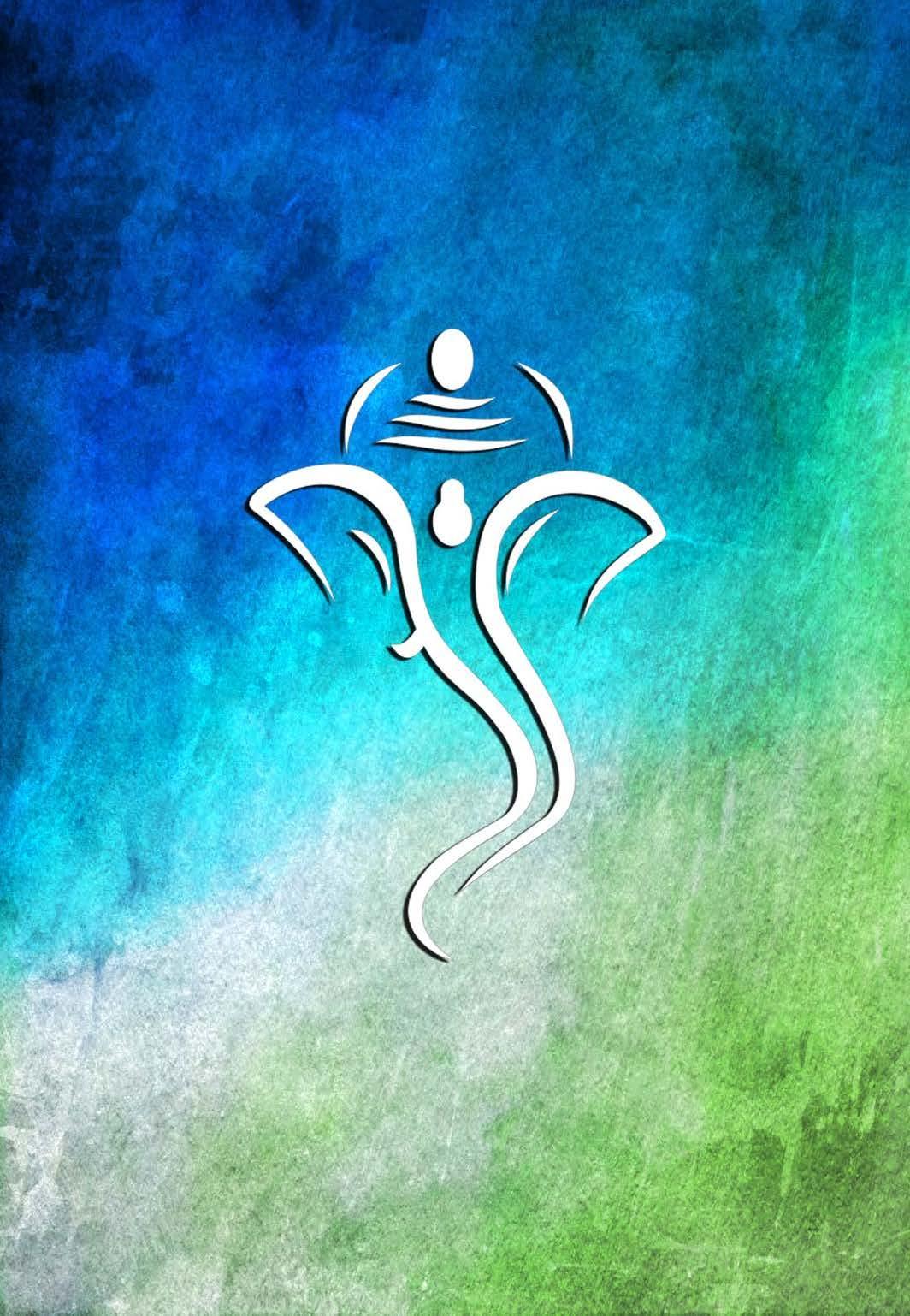
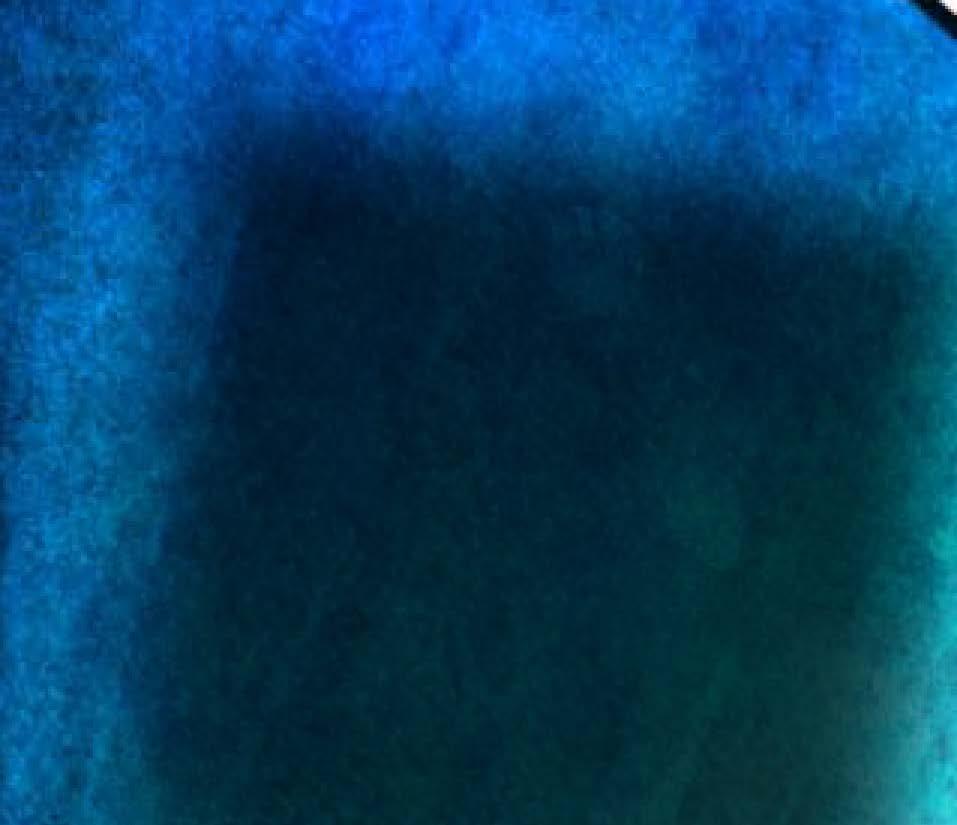


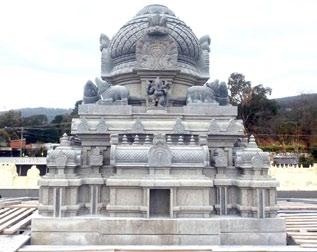







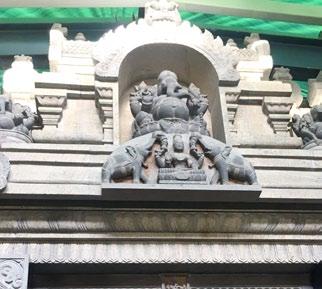



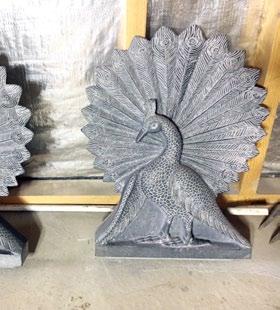
Level 24/44 Market St, Sydney 2000 • GPO Box 108, Sydney 2001 • Ph: 18000 15 8 47 Celebrating 25 years and 22 Multicultural Media Awards SYDNEY FREE Vol. 27 No. 10 JULY 2020 indianlink.com.au LINKING INDIA WITH AUSTRALIA BUILDING GANESHA’S NEW ABODE IN MELB BUILDING GANESHA’S NEW ABODE IN MELB
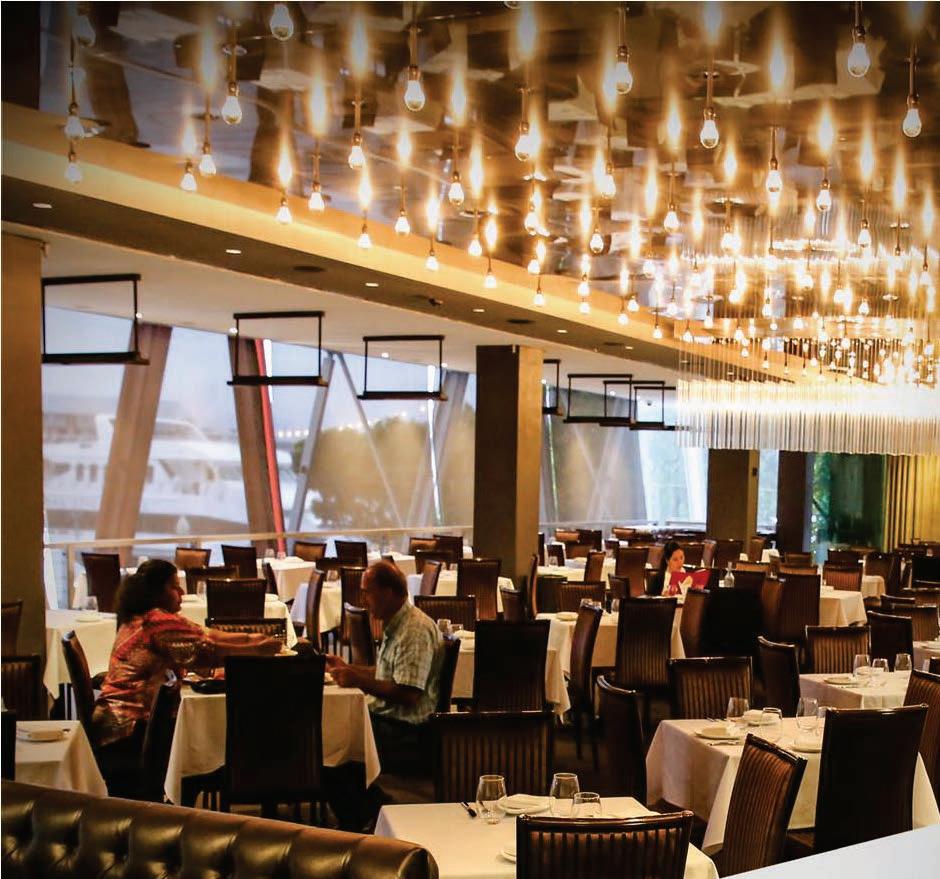
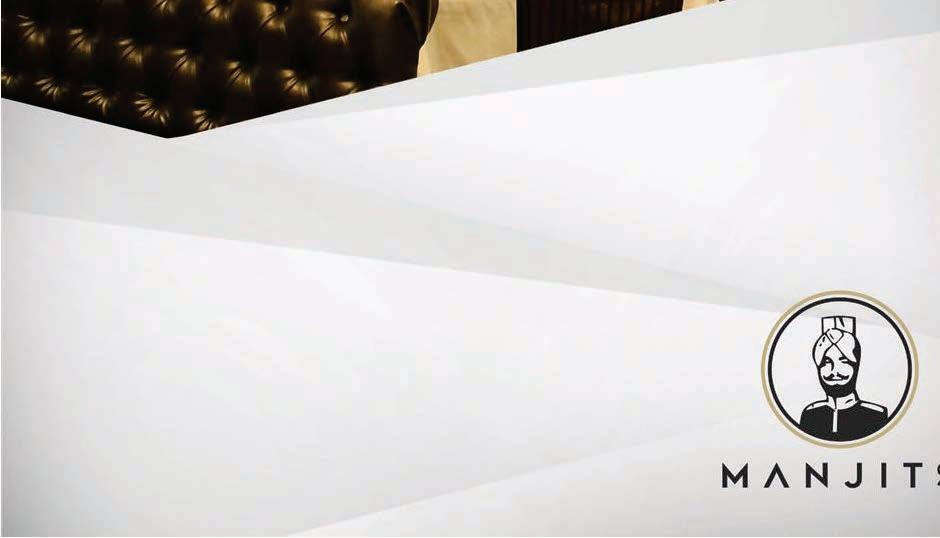


2 JULY 2020 www.indianlink.com.au
PUBLISHER
Pawan Luthra


EDITOR
Rajni Anand Luthra
Suruchi Sehgal
MELBOURNE COORDINATOR
Preeti Jabbal
CONTRIBUTORS
Simmi Singh, Harleen Oberoi, Frankey Gerard Fernandes, Rhea L Nath, Natasha Jha Bhaskar, Nisha Chaman, Bageshri Savyasachi, Dhanya Samuel, Sandip Hor, LP Ayer, Minal Khona
Charuta Joshi
Indian Link is a monthly newspaper published in English. No material, including advertisements designed by Indian Link, may be reproduced in part or in whole without the written consent of the editor. Opinions carried in Indian Link are those of the writers and not necessarily endorsed by Indian Link. All correspondence should be addressed to: I

Why Australia needs more migrants
BY PAWAN LUT HRA
According to the Australian Bureau of Statistics, Australia welcomed 210,900 new migrants both (permanent and temporary) in the calendar year 2019. However, the way most things seem to have panned out this year, pre-COVID planning is a lot different to post-COVID reality. This calendar year, the figures are going to be closer to 34,000, Prime Minister Scott Morrison said at a Press Club luncheon recently.
With the pandemic, more Australians are returning home, just as temporary residents here are going back to their home country. Travel restrictions have also meant that student visas and others on temporary visa options have been halted.
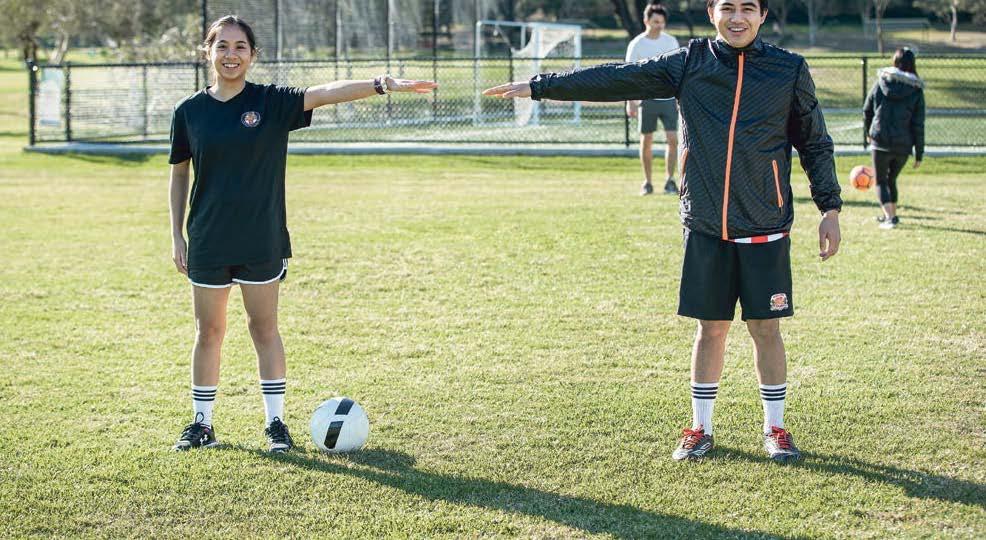
What a change from an initial forecast of over 510,000 between 2019 and 2022.
Why does Australia need a high level of migrants? The answer is purely economic. A high level of migration has been cited as one of the reasons for Australia’s sustained economic growth
over the last 28 years. In fact, a leading economist from the Grattan Institute has attributed about 40 per cent of real economic growth in Australia in recent years to the intake of skilled foreigners. Another recent media report called attention to the fact, in its very title, that ‘Immigrants do not take Australian jobs: they create jobs for others’, alluding to the current crisis in the education and agriculture sectors as caused by the COVID-related absence of international students and working holidaymakers.

Migrants start businesses, avail of vital services such as schools and roads and hospitals, buy property, and pay taxes to contribute to national economic activity.
Yet no politician or decision maker wants to address the long-term benefits to the nation and the economy. In an aging Australian population where for every retiree there are only about five working Australians (predicted to be 2.5 for each retiree by the middle of the century), and with birth rates declining, migration will be the key to Australia’s long term growth.
One expects that as jobs dry up in the post COVID-19 Jobkeeper world, there will be more pressure on the government to hold back on opening the migration doors. One can imagine the shrill voices
of radio jocks in their crusade of ‘jobs for Australians’, conveniently forgetting that by increasing the pie, there can be better and more jobs for all.
Be that as it may, the numbers from 34,000 will need to increase. Refugee and humanitarian migrants will be an important part of the intake and one assumes, there will be a push to bring in migrants with high skills base.
While there will be a push from migrants from across the globe, Indians can help fill the need for new migrants. A country with over 1.3 billion and an average age of 28, Indian migrants arrive with values which make them good longterm citizens. Well educated, law abiding and while nationalistic to their country of birth, they develop strong allegiances to their adopted countries.
To understand their deep desire to succeed in their new home, one has to simply look at the levels Indian migrants have achieved in politics and commerce in countries such as the United Kingdom, United States and Canada. Australia prospered in the past on the back of its sheep and wool and coal and iron. In the near future, it might well be the industriousness, entrepreurship and multiplicity of a diverse workforce that will power the economy.
Keep going. Stay 1.5m, or two arm lengths apart.
Distancing is working. And we’re all doing an amazing job to help stop the spread of COVID-19. Our combined e orts so far mean that some restrictions are being eased. But we must remember to keep distancing, and wash our hands regularly. If you feel unwell stay home, and if you have any COVID-19 symptoms, get tested. By doing this, together we will help prevent outbreaks. And we will save lives.
For more information on COVID-19 visit nsw.gov.au
JULY 2020 3 NATIONAL EDITION
SOCIAL MEDIA
SALES
N D IAN L IN K M E D IA GR O UP Level 24/44 Market St, Sydney 2000
P O Box 108, Sydney 2001
h: 02 9279-2004 Fax: 02 9279-2005
info@indianlink.com.au
G
P
Email:
EDITORIAL



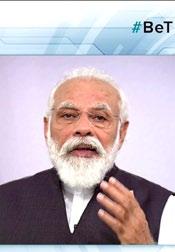
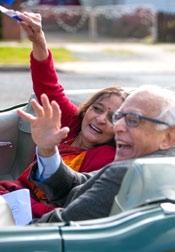
4 JULY 2020 www.indianlink.com.au Ganesh’s new Melb home 06 c O ve R STOR y 24 26 14 16 SP ec IAL fe ATUR e S 11 COVID Melb locked down again 14 INDIA-OZ Global virtual conference #BeTheRevival 16 PEOPLE Retiring doctor gets street parade 24 SPECIAL FEATURE An old Indian link in Tasmania 26 MAINSTREAM An Australian goshala c ONT e NTS





JULY 2020 5 NATIONAL EDITION
Building Ganesha’s new abode in Melb
How traditional artisans worked on an all-granite structure in a $4 million development design. SIMMI
SINGH and RAJNI ANAND LUTHRA report
A history of the Sri Vakrathunda
The temple was first conceived in 1989, when a breakaway group moved away from the Hindu Society of Victoria, frustrated at the slow progress in the development of a Ganesha temple.

Tracing the history, Shan Pillai said, “We procured a church building no longer in use, close to the city. A pro-tem committee was founded with trustees, members and volunteers, and with donated funds, we began the process of building the temple in 1990.”
The deity was given to them by Kanchi Shankaracharya. Shan and his wife went to India to source a deity that they wanted
blessed by the Shankaracharya. They could not find one, but paid a visit to the Shankaracharya regardless, and were pleasantly surprised when he offered them a deity.
“Our association with Kanchi is therefore very long and very deep,”Shan said with reverence. “We have gone back for every consecration.”
(It would turn out to be the first of many “miracles” in the journey of the construction of this temple, miracles in which challenges that cropped up were magically sorted out – almost as if Ganesha himself, the Remover of Obstacles, was clearing the barriers for this devout group

of Melbournians.)
In Melbourne, in the absence of formal premises, the deity lived in the home of devotees Mr and Mrs Somasundaram for eighteen months and was taken out every month for worship at a local hall where devotees gathered.
“500 devotees turned up in those early days. It was a number we never expected, but it only strengthened our resolve to build a temple to our Ganesha”.
Soon after, the Melbourne Vinayagar Hindu Sangam (MVHS) came into being as a registered non-profit organisation. Stapathi Purushothaman came in 1991 to design the first Ganesha Temple in
Victoria. The kumbabhishegam of the temple was carried out in 1992.
By 2019, the Sangam had acquired four surrounding properties, the last of which was procured at $1.3 million.
For the second consecration in 2007 (Hindu temples have to be consecrated every 12 years or so), Purushottaman extended the temple premises and added a unique raja gopuram (grand entrance), built partly in granite sourced from India and partly in concrete.
The following year, the ten-day Mahotsava festival was launched, now an annual affair. The major highlight of this festival is the chariot procession held on
6 JULY 2020 www.indianlink.com.au c O ve R STOR y
Much to the disappointment of thousands of devotees, the latest COVID-19 lockdown in Melbourne has caused delays in the consecration ceremony (Maha Kumbabhishegam) of the largest Hindu temple in the Southern Hemisphere made with handmade granite stones.
Dedicated to Hinduism’s most-loved deity Ganesha, the Sri Vakrathunda Vinayagar Temple in The Basin recently underwent a historic transformation in its architecture, with granite used for all eleven of its shrines. Granite is typically used for the construction of Hindu temples and the decorations, as well as the deities within.
“We are proud to say our temple now becomes the largest Hindu temple in Victoria and in the Southern Hemishphere built in the traditional style of our ancestors,” Balaa Kandiah, the president of the Melbourne Vinayagar Hindu Sangam (MVHS) told Indian Link.
Granite is a highly durable stone, making it ideal for temple use as it can last thousands
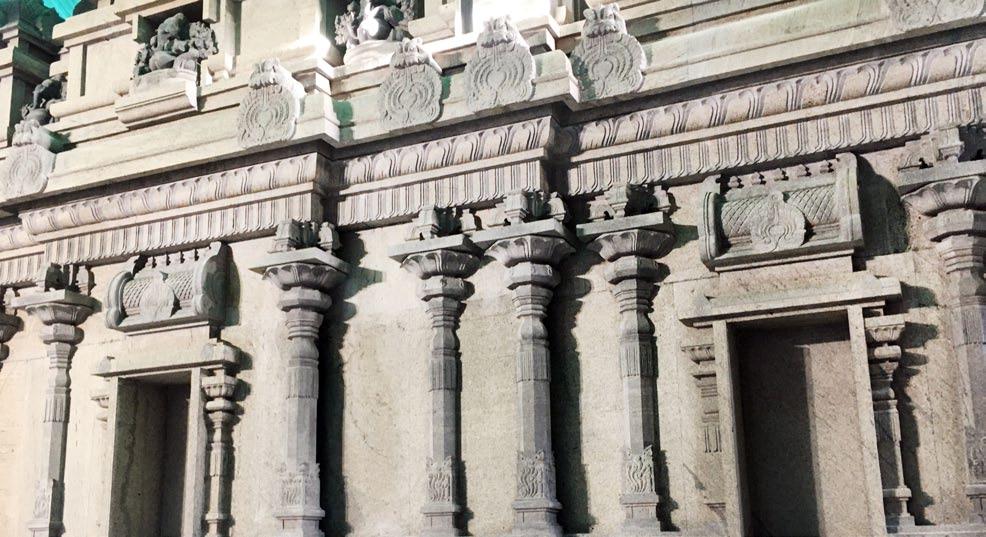
of years. It is also scratch proof, very strong and siliceous. But ancient Hindu temple architecture lists that granite is chosen as it is the only stone where all five elements of natureearth, water, air, fire, and space - can be found.
“It’s a kind of ‘living stone’, so our statues capture the vibrations of the music, the chanting and the prayers conducted within the temple,” Shan Pillai, Secretary of the MVHS said.
More than 1,200 stones were used for this project, with the main shrine of Lord Ganesha alone built from 17 layers of almost 400 granite stones.
Architect Purushothaman (Puru) Jayaraman designed and executed the complex project, inspired by the drawings on the iconic Hindu temples in Tamil Nadu built by Raja Raja Chola.
Puru has had a lifelong fascination for temple architecture, taking on a five-year diploma in Architecture and Sculpture from the one and only College of Traditional Hindu Architecture and Sculpture at Malappuram, Tamil Nadu, India, and a
three-year specialised degree in Traditional Architecture and Sculpture from the University of Madras.
He came to Australia with vast experience, having designed Dravidian Chola style temples in India, Sri Lanka, Malaysia, USA Singapore and Australia.
“All the granite used in the temple was sourced from a single quarry, in Namakkal near Salem, Tamil Nadu,” he explained. “This was done to ensure uniformity in colour and texture. The stones varied in size and weighed between 200kg and 6 tonnes each.”
The main temple tower is carved out of a single giant stone, weighing 6 tonnes and 1.19 metres in diameter.
(Called the ‘vimana’, the main temple tower is typically shaped like a pyramid, rising in steps geometrically.)
Nearly 100 artisans worked on the statues, in three different sites in Tamil Nadu.
“They took a year to create - cut and carved in intricate designs. It then took six months to assemble here in Australia.”
Vakrathunda Vinayagar temple
the ninth day, in which the temple deity is taken out on the city streets. A grand chariot built in the tradition of the ancient Hindus is used for this purpose. The spectacle of it all makes it an iconic event for the area.
Today the Association has around 285 members, and thousands of devotees come for many of the main functions such as the Vinayagar Sathurthi in September/October. Numbers have grown substantially in the last five to ten years. (The 2016 Census of Population and Housing showed that the number of Hindus in Australia had increased by 60% since the previous Census in 2011.)
“The development projects at the temple have all been self-funded,” Balaa kandiah stressed. “Not a single penny has come from the government, except for the building of our multipurpose hall for which we received a $200,000 grant.”
Three temple priests conduct the worship, explaining the rituals to the younger generation in English.
Besides worship, the temple also participates in social justice programs in the mainstream including the Knox City Council’s annual festival. It boasts a 30year relationship with the Salvation Army and organises volunteer programs such as during the recent bushfires.
“As COVID struck, we could not unfortunately offer our services to the wider community as we became a building site rather than an operating temple,” Shan lamented.
Even though the third consecration planned for this year is now postponed thanks to COVID, Shan and Baala prefer to look at the bright side of it all.
“Puru has been working on the construction for 18 months since 2018, travelling frequently between India and Australia. When he arrived back in Melbourne earlier this year with 20 of his artisans for the final build, it was only a week before lockdown was announced.”
Besides the pyramid, Dravidian temple architecture requires that the building be contained within a compound wall; have a gateway in the centre of the front wall; a raised platform to enter the main door (mandapa); sculptures of fierce dvaarpaals or sentries guarding the main door, and a cupola to crown the pyramid at the very top (vimanam or shikher).
All these elements at Lord Ganesha’s newest home in Melbourne, are built in granite.
Balaa observed, “The original plan for granite was restricted to the main shrine moolasthanam, but so overwhelming was the support from our members and devotees, that we decided to go for granite for all eleven shrines in the temple. Taking into account the Australian works, which included, new roofing, new steel structure, new flooring, the various extensions both at the rear and for the Vasanthamandpam, this raised our costs from $2.5 million to $4 million.”
It also became a mammoth task for Puru.
Another of Ganesha’s miracles, no doubt. The current Temple committee comes with great experience and talent, many members currently working as civil engineers and architects, in senior management as well as early career roles. Shan and Balaa themselves retired from senior management roles in the corporate world and are now fully devoted to the temple cause.
As for the many “miracles” that have dotted the entire journey of the temple’s latest redevelopment, you’ll have to wait till the grand opening: a magnificent coffee table book has been planned to reveal all. It promises to be the ultimate tribute to Vignahaara, Remover of Obstacles.
JULY 2020 7 NATIONAL EDITION
Shan described seeing the designs on paper early on. “Each stone was numbered; its position, clearly specified, and its dimensions precisely listed. It was a massive jigsaw puzzle. I couldn’t even begin to imagine the amount of thought that went into it all!”
Balaa added, “Now that we have seen the completed structure though, we can’t tell where the stones meet, it all looks like one single piece.”
The joining process is the same as that used by our ancestors, Puru described. “The stone is hollowed out so that the load falls to the sides. The edges are made coarse, and ‘milk’ ( paal) made up of very fine cement and water is used as the binding agent.”
Puru’s drawings and designs were sent to IIT Madras where the calculations were verified and validated; the certifications provided were approved by the Australian authorities.
“Apparently the structure can withstand any earthquake,” Shan revealed.

What challenges, if any, came up in the development process?
“A major challenge was sourcing the granite,” Puru revealed. “The Indian government is restricting the amount of granite that can be exported. Our shipments were among perhaps the last few that could get out.”


Quarantine service was another road bump, Shan added. “As the carved structures were loaded on to trucks in India for the transport, heavy floods hit the area. When the shipment arrived here, it was covered in leaves and mud. It all went into quarantine, and temple volunteers had to go out to clean the entire lot. It was quite an experience, starting at 4 am each day!”
“Luckily the wood was ok,” Balaa offered. “Quarantine regulations had specified we use a particular type of wood packaging. It turned out to be the most expensive kind, so our costs went up significantly. But it was God’s wish…”
The Sri Vakrathunda Vinayagar Temple’s grand new makeover puts it in the same league as NSW’s Helensburgh Temple and Murugan Temple which were built along similar lines – with traditional artisans designing in India or coming here to create the statues and pillars. Yet it would perhaps prefer to be in the same league as Adelaide’s Ganesha Temple, which was granted heritage status in 2013.
Would the Vinayagar Temple seek heritage status too?
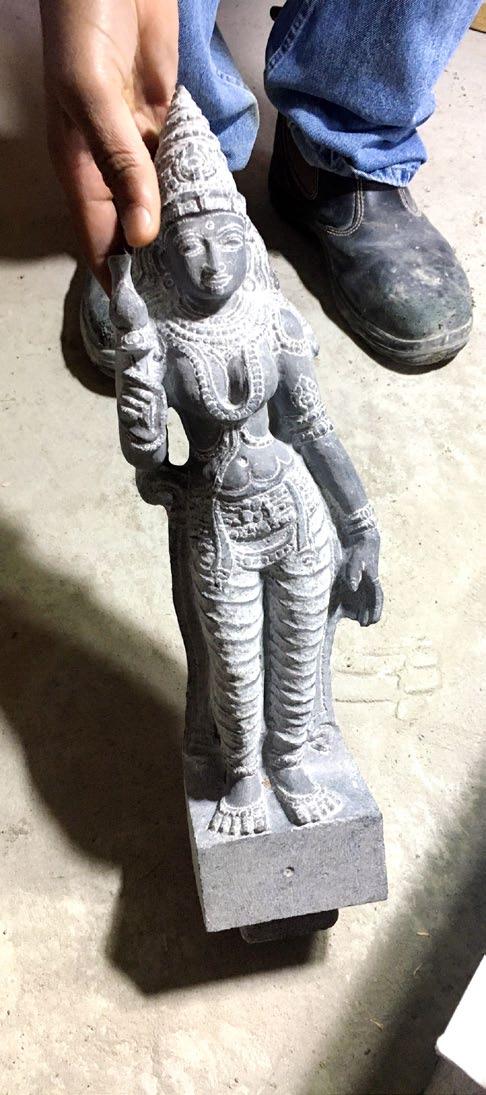

“It is certainly an idea we have toyed with,” Shan admitted. “But that is in the future.”
Originally scheduled for June this year, the consecration is now put off till the end of COVID restrictions.
8 JULY 2020 www.indianlink.com.au
c O ve R STOR y
*Contestants must be in Australia to take part


JULY 2020 9 NATIONAL EDITION
What if all hiring managers put their personal biases on the job advertisement?
BY HARLEEN OBEROI
Adisability care provider in Melbourne has been in the news recently, advertising for care workers but requesting“no dark-skinned” applicants. It said the ad was removed soon after it was posted and that an investigation was launched into how it was allowed to be put out. The ad has been condemned as “stomach-churning” by the Chairman of the Anti-Defamation Commission Dr Dvir Abramovich.

The company in their advert stated, “We request no dark-skinned (Indian or African) applicants apply for this role.” It said the request was made because of a “client request”. There has been much backlash against the advertisement, but I beg to differ. I think they did the right thing, and more organisations should follow and say it like it is.
You see, they’ve actually done a favour to ‘people of colour’ (POC) by telling them up front that this job is not for them. The advert saved POC the time and effort invested in preparing an application, only to be rewarded with deafening silence in return. Or at best becoming a tokenistic POC candidate on the shortlist, and then receiving that standard reply: “the calibre of candidates was very high…” with no additional meaningful feedback.
As an HR professional and a Diversity and Inclusion specialist, I often meet or hear from people who have put their heart and soul into a job application. I find them to be talented, educated, and hardworking applicants. Some of them may have moved here to gain

a tertiary education, but many are born and raised here who still encounter that question – where are you really from?
I’ve heard from a friend (who came here to further her education and has now gone on to become an excellent recruiter) who was told indirectly that she did not make the cut because ‘the team feels you would not be attending drinks with them as you seem different.’
Another was told by a recruiter that her
name sounded ‘too Indian’ and that had put off a prospective employer.



There’s even a name for this that sounds less offensive: Culture fit.
When I was younger and naïve, this would upset me no end. On one occasion I shot back, “Are you looking for ‘culture fit’ or ‘colour fit’?”
Of course, it’s not always about colour. It’s just as much about gender, about age, sexual orientation, how you dress, or even
your post code.

Whatever your bias, just spell it out. We now celebrate an annual Harmony Day (thanks for the samosas and the spanakopitas), and terms like “Diversity” and “Inclusion” are bandied about like nobody’s business, but positive changes are happening at a glacial pace. There is minimal integration at the mid and lower levels of management, and next to none at senior levels (tokenism at best). A previous boss referred to his executive team as his little United Nations, after he hired two new managers – a person of Chinese heritage, and me.
Meanwhile, there is a growing body of evidence suggesting that diversity has a significant impact on the bottom line; organisations with diverse management teams are more innovative and typically show 19% more revenue than those that do not. Yet 97% of Chief Executives and equivalents for top Australian organisations are from Anglo-Celtic and European backgrounds.
Young professionals like me who grew up outside their own culture, have made peace with the fact that 7 times out of 10, our application will not be picked up, or at an interview we will be told our English is ‘really good’.
It’s the new generation that I’m worried about - those who were born in Australia. These kids don’t have a dual identity; they see themselves as Australians first, but does the rest of Australia?
How about we do the youth of this country a favour so they don’t get their aspirations lost in the embedded systemic racism of corporate Australia, or have their ambitions crushed under the weight of your biases.
In your next job advert, write it as it is, and stop wasting their time, unless you are really ready to give them a fair go.
10 JULY 2020 www.indianlink.com.au OPINION
Just spell out your biases, and stop wasting our time
GET
indianlink.com.au IndianLinkAustralia @indian_link Indian Link
SOCIAL WITH INDIAN LINK
A growing body of evidence suggests that diversity has a significant impact on the bottom line; organisations with diverse management teams are more innovative and show 19% more revenue than those that do not.
Locked down again
A trade-off between health and economy?
Small business owners in Melbourne prepare for further downturn
BY PREETI JABBAL
Metropolitan Melbourne reverted into Stage 3 restrictions recently, albeit kicking and screaming.
The six-week clampdown came with little warning and was received with a sense of foreboding by the community, particularly small businesses.
“Revenues have been significantly impacted with these stop-start lockdowns,” said Priti Roberts, owner operator of the Art Factory, an arts school for kids. According to her the effect on her small business has been overall negative and even during the weeks when restrictions were eased the 4 square meters rule as well as physical distancing requirements put them in a position
where it wasn’t viable to operate. Some transparency from the Government would go a long way to help maintain morale and give hope, Priti said. “We need to understand what these lockdowns are trying to achieve,” she stressed. “Is the intent to eradicate the virus, or not overwhelm the medical system? At the moment it feels as though small businesses are not a priority for the Government, given they have asked us to close our doors yet again for 6 weeks with no explanation as to why, except that someone decided 191 COVID cases with 9 people in ICU and 2 new deaths was unacceptable.”
Addy Singh, who owns a childcare business, also feels that the economy will take a nosedive after this second wave of restrictions. He employs more than 120 staff in his childcare centres and according to him the future looks grim. “With Job Seekers and Jobkeepers packages ending soon there will be

serious repercussions, unemployment could spike, and it will be difficult to maintain all staff under these conditions,” he said. Besides that, children and parents are also faced with anxiety and uncertainties with escalating health fears and financial constraints.
“My question is, what is the guarantee that after the 6 weeks lockdown the situation with COVID will improve, and the community clusters will not return after that time?” he asked as he shared his apprehensions about the new restrictions in Victoria. “On the other hand, it is absolutely certain that businesses will be impacted significantly, and some may not even survive. So why lock the economy down for a virus?”
Restaurateur Rajen Bhatia is equally concerned,“After a long gap, things were just inching towards normalcy but this lockdown may create another setback, and this time I am worried it will take its toll,” said Rajen.
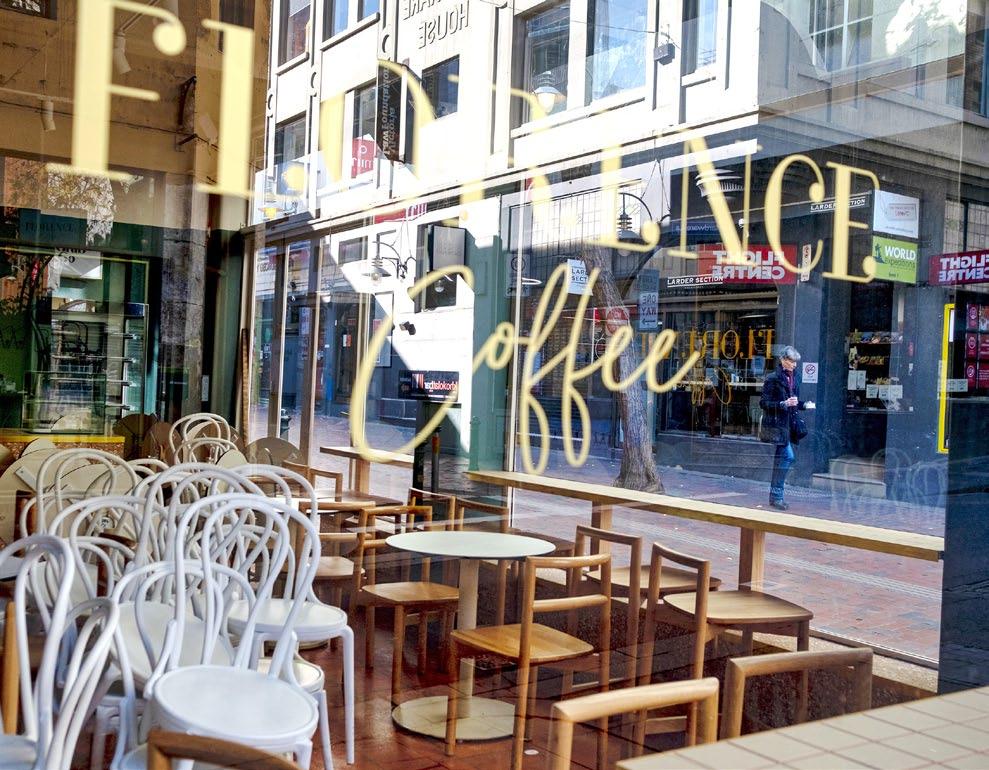
“During the last lockdown my business survived mainly because of our team’s resilience and with the support from our regular clients who ordered takeaways often. We had just started settling back into dinein and now we have to revert to takeaways again. Under these changing circumstances it’s difficult to retain staff and offer them consistent work. More than anything, I feel for those members of my staff who are international students, already struggling without much support,” shared Rajen.
(Rajen had served free food to struggling students during the previous restrictions with the support of other sponsors.)
Many others small business owners like Priti, Addy and Rajen in Metropolitan Melbourne and Mitchell shire are reeling under the unexpected turn of events and trying to understand whether the lockdown is a trade-off between health and economy. Either way pain is inevitable.
JULY 2020 11 NATIONAL EDITION WORK
Striking a global chord
The first-ever Global Goan virtual choir brought together 250 Goans to honour frontline workers and the Goan spirit
BY FRANKEY FERNANDES
As if assembling a large choir isn’t enough of a task, imagine assembling 250 singers and musicians in different time zones across the globe for a virtual choir.
This month, that was exactly what the Global Goan Alliance & Network (GGAN) achieved when they banded together to create a song for Goans around the world to come together in honour of those facing the COVID-19 pandemic at the frontlines.
Called the Global Goan Virtual Choir, this globally coordinated venture was the first of its kind. Steered by Goan-born and Bangalore-based Dr Maya Mascarenhas, the Global Goan Virtual Choir features a diverse group of Goans from across the global diaspora.
Australia was represented by Melbourne’s musicians including maestro Josefato Vales, his children Jovan and Mylene, Gerard Lobo, and his son Marvick Lobo.

“With the current scenario, it was not possible to plan the World Goa Day celebration which usually happens during the month of July and August. It was the founder of World Goa Day, UK-based octogenarian Rene Barreto, who pitched this idea and the event became a reality,” Gerard Lobo told Indian Link.
The process took six weeks of coordination, setting up a core team working across time zones to create the Global Virtual Choir. Lobo roped in the services of another versatile musician Josefato whose contribution was set as a base for the 2-and-a-

half-minute video.
Once the song came together, they were able to round up around 250 people who wanted to sing or play an instrument for this virtual choir. They selected the best global musicians who could record audio with studio quality. The song was officially released on 20 June.
While the project was the brainchild of key GGAN members Rene Barreto, Savio Ribeiro, Gerard Lobo, Maria Gomes Fernandes, Floscy Gracias, Samantha Pashaa, and Perry Goes, the team acknowledged all singers and musicians on the project.

“This was an opportunity to connect and acquaint with people in the diaspora and work in unity with a true spirit of

Goemkarponn. It was also a huge treasure trove of talent explored across various continents, regions and varying age groups of people bound by one common purpose during these times of adversity,” Maria Gomes Fernandes, a key member of the GGAN, explained.

She added, “We wanted English, Portuguese and Konkani songs which would be attractive to Goans and nonGoans. It had to be familiar and not about COVID, but to promote solidarity among
Goans across the world.”
According to Perry Goes, another GGAN member, diverse Goans from different parts of the world reached out to each other in this period of lockdown and despair, finding their cultural roots bind them all together.
“We wish that these bonds grow stronger as we emerge from this pandemic. We take this opportunity to recognise and thank all those in the frontline fighting this pandemic,” Goes said.
Since the song’s release, the Global Goan Virtual Choir looks ahead at more projects and collaborations.
“The Global Goan Virtual Choir’s short medley of Konkani, English and Portuguese songs were recorded by singers and musicians in the safety of their homes, with others and then, Global Goan
12 JULY 2020 www.indianlink.com.au c OMMUNIT y
Father-daughter duo Mylene and Josefato Vales Marvick Lobo
Gerard Lobo
Jovan Vales
•
•
•
Send Money Overseas most reliably and securely within 10 minutes through moneygram



Send Money to any bank account at the best rate and at fee of $15 (No Limits applicable on amounts)

Exchange your currency with us, we give the best rates and do not charge any commission


Send money to our own branches in all major towns and cities in Fiji and New Zealand


Ask us about our commercial business, we do import payments and all international business related remittance at best rate and a at fee of $15.00 only

JULY 2020 13 NATIONAL EDITION JULY NATIONAL EDITION St.Lukes 649 846 6637 Brown Bay 649 476 2086 Sylvia Park 649 525 4111 Mid Queen 649 377 5478 New Lynn 649 825 0121 Hamilton 647 834 3293 Wellington 644 589 9582 Parramatta 02 9806 0977 Parramatta 02 9806 0955 Blacktown 02 9831 8033 Liverpool 02 9877 2201 Hurstville 02 9585 2881 Sydney CBD 02 9235 2553 Darling Hbr 02 9211 3021 Brisbane City 07 3220 2881 www.lotusfx.com NeW ZeaLaND BraNCHeS 649 369 1723 Manukau 649 262 2931 Mt.roskill 649 620 4757 Papatoetoe 649 277 4000 Lower Queen 649 365 2280 Pakuranga 649 577 3223 rotorua 647 350 2425 Christchurch 643 343 3357 aUSTraLIaN BraNCHeS FIjI BraNCHeS Suva 679 331 7755 Suva 679 310 0512 Nadi 679 670 2257 Lautoka 679 666 7855 Nausori 679 347 7042 Namaka 679 666 1242 Labasa 679 881 1106 Nasinu 679 339 2007 Ba 679 667 8155
International Migration Centre Contact us for all your Australian Visa needs
Skilled – independent and Australian sponsored visas
Independent and sponsored visas for regional areas
Student visas and graduate skilled visa
Fiancé, partner and other family visa applications
Business skill – Temporary, provisional & permanent visas
•
•
•
•
Bridging visas
Applications for Review and Appeals Tribunals CONTACT DETAILS Amrit P Jagota (MARN 0532014) Ph 0414 338 423 Manvinder K Josan (MARN 0962796) Ph 0410 719 375 We have moved to new address Suite 2, Level 1, 57 – 59 Dunmore Street Wentworthville NSW 2145 Phone 02 86287336



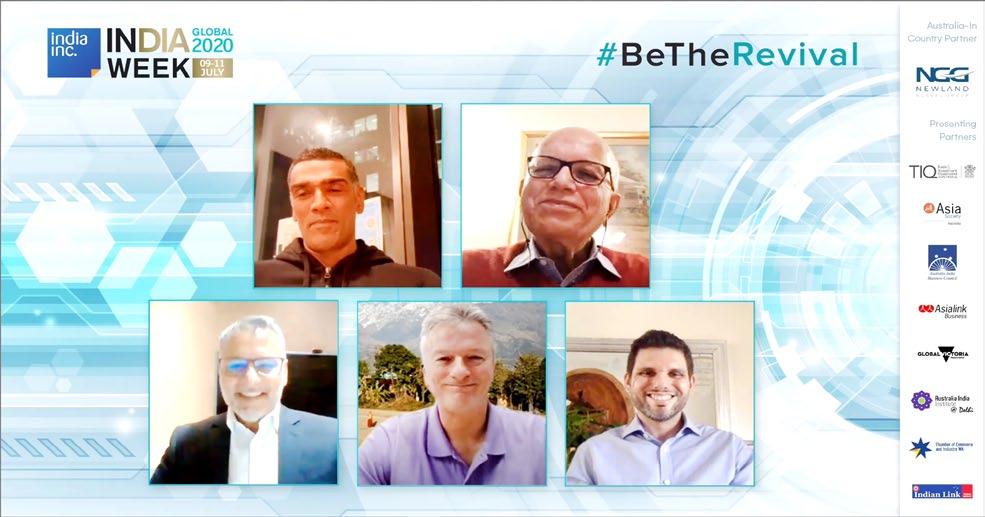
14 JULY 2020 www.indianlink.com.au INDIA-OZ
Australia shines at India Global Week
A revival themed online event sparked insight about economics, politics, technology and culture from global experts.
It was the biggest ever international virtual event on India’s globalisation. India
Global Week 2020 (IGW2020), themed ‘BeTheRevival: India and a Better New World’ concluded on 11 July and surpassed all expectations. Three invigorating days, packed with incisive discussions, inspired positivity and a call for action, to look ahead to a better, brighter future beyond COVID-19. IGW2020 brought together global thinkers, political, business and spiritual leaders, sporting stars and industry specialists on one platform, organised by leading UK-based media house India Inc.
The historic event was inaugurated by India’s Prime Minister Narendra Modi, who in his address to the global audience, stated that India will play a leading role in the global economic revival, and outlined the new opportunities that India has to offer with its ease of doing business reforms and opportunities in diverse sectors (agriculture, defence, space, MSME to name a few). His message was focused on furthering India’s role in creating global good and prosperity – affirming the opportunities in a New India that is reforming, performing and transforming, such as the role played by India's pharmaceutical industry in providing affordable medicines to the world in these times.
The Australia Stream of IGW2020, which was held on 10 July, was curated, organised and managed by Newland Global Group (NGG), as the In-Country partner. NGG is Australia’s leading corporate advisory firm focused on simplifying and strengthening trade and investment ties between Australia and India. NGG’s aspiration to create a strong knowledge resource on Australia India economic ties, and its focus on enhancing cultural and business understanding of Transforming India, led its management to spearhead the Australia Stream. With +75 exhilarating sessions, +250 engaging speakers, +30,000 participants from 76 countries, IGW2020 was truly a historic global event, a first of its kind.
It was the intent to build on the promise, optimism and ambition of the Australia India
• Gitesh Sarma, India’s High Commissioner to Australia
• Peter Varghese AO, Chancellor of The University of Queensland, Former Secy, Department of Foreign Affairs & Trade, Aus HC to India, Author India Economic Strategy 2035 (IES2035)
• Anil Wadhwa, Author, Australia Economic Strategy (AES), Former Secy, MEA East (India)
• Rama Bijapurkar, India’s most respected thought leader on market strategy and India’s consumer economy
ties that led to a fulfilling day of insightful discussions. The Australia Stream included six different sessions covering the strategic and economic imperatives of this bilateral relationship. It started with the introductory session, Strengthening Australia India ties, with India’s High Commissioner to Australia Mr. A Gitesh Sarma who shared his ambitions for this relationship, and suggested how Australia can play an integral role in India’s growth story. “India’s need for resources, investments and technology can be supplemented by Australia’s strengths,” Mr Sarma said. He also highlighted the prominent role of the strong 700,000+ Indian diaspora in Australia, which has created an encouraging space for itself through its skill and talent, and has solidified these relations further. The High Commissioner was hopeful that the relations would thrive at all three levels of engagement (government, business and people-to-people).
Australia and India are situated in the most dynamic region of the Indo–Pacific that is the centre of economic and strategic gravity today. The session on the Indo-Pacific focused on the promising roadmap laid out in the Comprehensive Strategic Partnership between the two countries. The panel stressed that the egregious behaviour of China throughout this pandemic, economic ties, security alignment, and Islamic terror – are bringing Australia and India closer.
The Mutual Logistics Agreement can enable both India and Australia to provide disaster relief and other support to the island nations in the Pacific. The panel highlighted that the relationship was at an elevated level; governments can be catalysts but the private sector has to take the relationship forward. Mobilising the diaspora community, the scientific community and other groups will be key to building the relationship.
The session on manufacturing centered around why manufacturing matters, and if ‘Designed in Australia, Made in India’ is a mantra to follow. The question asked was, can India’s aspiration for global competitiveness in the manufacturing sector be matched
By NATASHA JHA BHASKAR
with Australia’s innovation and capabilities in advanced manufacturing? The speakers were of the opinion that India has been able to build a world-class globally competitive industry especially in pharmaceuticals and automotive, which can be replicated in other sectors. Data infrastructure can be a major area for collaboration, and could bring great minds together from both countries. India is big in production, while Australia is a leader in processing. Both countries could identify synergies in sectors like telemedicine, mining, pharma and biotech, and be part of the shifting supply chains.
Scale, complementarity and diversifying market risks are the three factors driving Australia's engagement with India. India has been placed in the 'too hard' basket by corporate Australia due to the general thinness of knowledge on how to get started, asserted Peter Varghese AO, former Australian High Commissioner to India, and author of the highly acclaimed India Economic Strategy to 2035 (IES2035), speaking in the session on bilateral economic strategies. The panel stressed that India has a profusion of talent, its consumer market is of a mind-boggling scale, and any story about India cannot be complete without mentioning its innovation talent, all of which make it a valuable investment destination.
In another engaging session this time on sports diplomacy, former Australian cricket captain Steve Waugh shared his India journey and his upcoming book, Spirit of Cricket based on cricket as a religion in India. (He also stated that the Border-Gavaskar Trophy is equivalent in terms of significance, to the Ashes series.) The question put to the panel was whether sport can be a soft diplomatic asset between Australia and India. The panel stressed that grassroots development is very important for the development of a holistic sports ecosystem. Australia’s innate strengths in areas of sports science and highperformance, conditioning and strength can make it a natural partner for India’s Olympic program preparation.
Critical minerals such as lithium, cobalt
Australia Stream speakers
• Navdeep Suri of ORF, Former Indian HC in Australia
• Prof. Rory Medcalf, Professor and Head of the National Security College at the Australian National University
• Dipen Rughani, CEO Newland Global Group, Sydney
• Harinder Sidhu, Deputy Secretary in the Department of Foreign Affairs and Trade and Australia’s former High Commissioner to India and Ambassador to the Kingdom of Bhutan
• Melissa Conley Tyler, Director, Asialink
Diplomacy
• Dr. Christiane Hamacher, CEO BIOCON Biologics
• Michael Sharpe, National Director –Industry at Advanced Manufacturing Growth Centre
• Dr. Vanessa Guthrie, Former Chair of the Minerals Council of Australia
• Joe Kaderavek CEO, CobaltBlue
• Natasha Jha Bhaskar, GM, Newland Global Group
• Dr. Arindam Bhattacharya, MD & Sr. Partner, BCG India
and rare earth minerals will dominate new energy ties between both nations. The session on the potential of critical minerals engagement focused on the Indian Government’s reforms that have opened up huge opportunities for Australian companies in the exploration and extraction of minerals. As India begins its transition to green technologies, the demand for critical minerals will go up, and Australia can step in to fill this gap. There is also an opportunity for India to partner with Australia to build a sustainable domestic mining industry.
The Australia Stream was also enriched by the warm video message of Senator Simon Birmingham, Minister for Trade, Tourism and Investment, expressing his ambition for the Australia-India relationship, and how both countries could take advantage of the synergies that exist between them.
IGW2020 has truly showcased Australia’s role, strength and potential in the changing global and economic order, and that its ties with India are at the centre of global deliberations today. The global strategic and economic repositioning has exposed other countries to the significance of AustraliaIndia ties driven by intent and action. To this end, the Indian Foreign Minister, Dr S Jaishankar expressed his aspirations for the Australia-India bilateral relationship to a global audience when he said, “Australia is a country with considerable weight, considerable influence, with a lot of interests in the region. If the region is to be more secure, more stable, more predictable, then countries like India and Australia need to come together. You should be looking at a much stronger relationship to unfold in the coming days.”
IGW2020 has helped expand the AustraliaIndia ties further, and has echoed PM Modi’s sentiments that Australia is no longer at “the periphery of India’s vision but at the centre of its thoughts.” It will enhance the speed and scope of this relationship further. The fundamental component that matters the most, is constant engagement and sustained momentum.
• John Madew Head of Mining and Resources, Australian Trade and Investment Commission (AUSTRADE)
• Prof Rajesh Chadha Program Director, Natural Resources Brookings India
• Mustafa Ghouse CEO, JSW Sports
• Steve Waugh Former Cricketer
• Dr. GK Harinath Former Chairman and Board Member of Cricket NSW, Board Member of Cricket Australia, Chairperson, Multicultural NSW.
• Ravi Krishnan, Chairman & CoFounder, Stepathlon.
JULY 2020 15 NATIONAL EDITION
Guard of honour for Dr velu
The town of Crookwell NSW thanks Indian-origin doctor, retiring after 45 years of service


 BY RAJNI ANAND LUTHRA
BY RAJNI ANAND LUTHRA
At a time when polarisation and otherness have come to dominate so much of our social discourse, the story of Crookwell’s Dr Velu warms the heart for its inclusiveness and acceptance.
This month, as Dr Velu retired after 45 years of service at NSW’s Crookwell District Hospital, he agreed to attend a farewell lunch organised by colleagues.
Pleasantly surprised as a convertible arrived to pick him and his wife Chandra, he couldn’t have guessed there was much more than lunch waiting for him.
The drive down the city’s main street will be one he and his family will remember for the rest of their lives.
Townspeople lined the street to felicitate him, thanking a man who cared for them for most of his career as a doctor.
“He delivered half the town as babies, saved countless lives, and held the hand of so many as they have passed,” said an ABC report that has gone viral in Australia’s Indian community.
“I didn’t know what to say,” Dr Velu told Indian Link. “I was overwhelmed, embarrassed even. I felt like I was in a dream.”
The grand send-off was organised by a ‘committee’ of colleagues from the medical
fraternity.
“I’ve known them all for many years, but they kept the ‘operation’ a secret,” he laughed.
The event was two to three months in the making, he would learn later.
Police and local council approvals were sought to have the main street kept clear; businesses were alerted, and notices sent out in the shopping bags at the local IGA and in letterbox drops.
The response was enormous. Grateful locals came out with placards, and the three schools along the route had the kids lined up at the fence, cheering and waving.
“Small towns are like that,” mused Dr Velu. “People are affectionate, the community spirit is strong.”
He recalled the time when two other local heroes were similarly felicitated, Hockeyroos Emily Smith and Kellie Miller after leading their team to a Commonwealth Gold.
Dr Ramaswamy Thangavelu arrived in Australia in 1970 from Tamil Nadu in India to take up a position as surgeon at Lockhart in NSW’s Riverina region.
“The special plane that brought me to the town, landed in the paddock,” he remembered with fondness.
Five years later, he moved to Crookwell near Goulburn to work at the District Hospital, at the behest of the hospital’s anaesthetist Dr Krishnan. Together they performed surgeries for four decades.
(An Erode lad, Dr Velu took his medical degree from Chennai Medical College and a Master’s in Surgery from Stanley Medical

16 JULY 2020 www.indianlink.com.au P e OPL e
Photos: f acebook (AB c c anberra)
College Chennai, where he also worked briefly as Associate Professor of Surgery.)
“To new migrants, I would say, try living and working in the country,” Dr Velu advised. “Your services will be welcome and appreciated in the small towns. You’ll become part of the community and experience the true spirit of what it is to be Australian.”
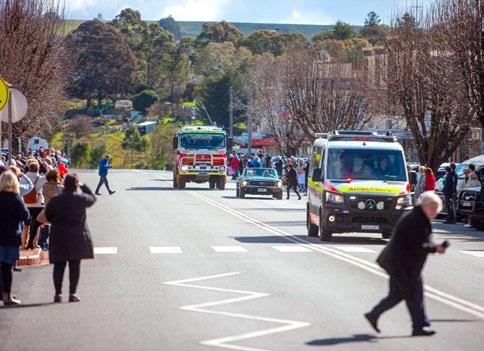


He took a moment to thank his wife Chandra, who manages the surgery where he will continue to work as a GP. “Chandra has put up with me very patiently – even when I worked 24 hours a day in the early years. She’s well integrated in the community here, involved in many activities.”


Their daughter Veena came in from Melbourne for the occasion, and son Visu arrived from Sydney with his wife Vanitha
and kids Roshan and Shiva. Veena said later, “I’m really proud of my parents, and so very touched by this outpouring of love.”
As for Dr Velu himself, he concluded with humility, “I don’t think I did anything extraordinary – I just love my work.”
JULY 2020 17 NATIONAL EDITION
“Small towns are like that. People are affectionate, the community spirit is strong.”
When a 103-year-old Indian man defeated the coronavirus
In a huge relief for his anxious family, a sprightly 103-year-old Sikh man has vanquished the coronavirus and returned home to savour the victory.
Now ranked India’s oldest ICU survivor of COVID-19, Sukha Singh Chhabra of Thane was happily discharged from the city’s Kaushalya Medical Foundation Trust Hospital (KMFT) in June.
His younger brother 86-year-old Tara Singh who was also infected, was discharged from the hospital a couple of days after him.
For nearly a month, Chhabra’s entire family was on tenterhooks although he remained largely unaware of the potentially deadly infection that had afflicted him.
“We downplayed it and requested him to get admitted to a hospital for proper care,” his 39-year-old grandson Gurdeep K. Chhabra explained. “He agreed without any fuss, so we didn’t see any point in unnecessarily alarming him at his advanced age.”
After his swabs tested positive, he was wheeled into the KMFT Hospital on 2 June. His sons and grandchildren prayed, while his young great-grandchildren waited for him to return home to play with them.
Chhabra’s brother Tara Singh had come to visit the family briefly and lived with his elder brother, and hence got infected. He was admitted to the same hospital and spent days in the ICU.
Chhabra’s month-long stay in hospital was mostly lonely and without the hustle-bustle of his large family due to the COVID-19 protocols. Still, the senior Lahore (Pakistan)born man braved it remarkably well.
“He was twice in and out of the intensive care unit, required non-invasive ventilation, inotropic supports to maintain his heart and lung functions for moderate Acute Respiratory Distress Syndrome, along with COVID Pneumonia,” said Amit Lala Khomane, Head of Critical Care Medicine at the hospital. “He had a very tricky course, going uphill and coming downhill.”
A special team of doctors was assigned to treat Chhabra on the long road to recovery. However, they generously acknowledged that “it was the patient’s own determination to fight out COVID-19 at this advanced age” which was very important.
“We as doctors left no stone unturned to keep him and our other patients, to win this
battle,” said a doctor.
Marvelling at Chhabra’s “miraculous recovery”, the KMFT Trustees Amol Bhanushali and Sameep Sohoni decided to waive off the treatment costs for Chhabra.
After he was accorded a warm send-off with a resounding round of applause, the weary Chhabra returned to the comfort and safety of his home.
“Before lockdown, he was very active as usual. He even visited the Gurudwara Shri Dashmesh Darbar, climbed the stairs independently, prayed, took ‘prasad’ at the langar and returned home,” said Gurmukh Singh, President of the Gurudwara and Shiv Sena Municipal Corporator from Thane. Despite the recovery, Chhabra remains quite weak and has been on an intravenous semi-liquid diet since.
Indian Navy repatriated 3,992 citizens during the pandemic
The Indian Navy has brought back 3,992 citizens from various countries stranded due to the COVID pandemic, the force announced. In May, the Navy had launched Operation Samudra Setu as part of the national effort to bring back Indian citizens from overseas during the pandemic.
Indian Naval ships Jalashwa (Landing Platform Dock), and Airavat, Shardul and Magar (Landing Ship Tanks) participated in this operation which lasted over 55 days and traversed more than 23,000 kilometres by sea.
The Indian Navy has previously undertaken similar evacuation operations as part of Operation Sukoon in 2006 (Beirut) and Operation Rahat in 2015 (Yemen).
The COVID pandemic has had a significant impact on ships and seafarers due to the compact environment and forced ventilation systems onboard ships.
“It was in these trying times and difficult conditions that the Indian Navy took up the challenge to evacuate our distressed citizens from overseas,” Commander Vivek Madhwal said.
The greatest challenge for the Indian Navy was to avoid any incident of outbreak of infection onboard the ships during the evacuation operation. “Rigorous measures were planned and medical/safety protocols unique to the operating environment of ships were implemented. These were strictly followed onboard the ships undertaking Op Samudra Setu resulting in the safe return of 3,992 of our citizens to their homeland,”
the officer said.
Operation Samudra Setu was undertaken utilising Indian Naval ships best suited for the operation, catering for COVID related social distancing norms vis-a-vis medical arrangements and carrying capacity.
Ships used for the operation were specially provisioned and the sick bay or the clinic onboard was especially equipped with COVID related equipment and facilities.
Women officers and military nursing staff were also embarked for the women passengers. Basic amenities and medical facilities were provided to all evacuees during sea passage on these ships.
An expectant mother who undertook passage on Jalashwa gave birth to a baby boy within a few hours of reaching Kochi on International Mother’s Day.
Along with other government agencies, the Navy has also been at the forefront of national efforts to assist Indian citizens. The Navy’s IL-38 and Dornier aircraft have been used for ferrying doctors and COVID related material across the country.
Indian Naval personnel also innovated various customised equipment such as Personnel Protection Equipment NavRakshak, hand-held temperature sensors, assisted respiratory system, 3-D printed face shield, portable multi-feed oxygen manifold, ventilators, air evacuation stretcher pod, baggage disinfectants etc. Most of these innovations were carried onboard the ships undertaking Op Samudra Setu and niche equipment was also provided to the host countries from where evacuation was undertaken.
21-year-old Meera Mehta receives UK’s The Diana Award
21-year-old Meera Mehta is a young COVID-19 warrior and latest recipient of The Diana Award. She volunteers with the global non-profit Shrimad Rajchandra Love and Care and has been awarded the most prestigious accolade a young person aged 9-25 years can receive for their social action or humanitarian work.
Given out by The Diana Award charity and supported by The Duke of Cambridge and The Duke of Sussex, the Diana Award is awarded to young changemakers. This year, 23 young Indians between 11 to 25 years old have received the award.
“We congratulate all our new Diana Award recipients who are changemakers for
The artwork
captures
Warriors’ by
migrant labourers who lost their livelihood in the cities and were forced to walk back to their villages. It is featured in an ongoing online exhibition ‘The Spirit Remains Unlocked.’

their generation. We know by receiving this honour they will inspire more young people to get involved in their communities and begin their own journey as active citizens,” said TessyOjo, CEO of The Diana Award.
Since the tender age of six, Meera has been inspired by Pujya Gurudevshri Rakeshbhai, founder of Shrimad Rajchandra Love and Care, to volunteer for various projects for the remote communities of South Gujarat with the belief “Make compassion your nature, not hobby, habit or mood.”
“I will always remember the day at the first tribal camp I visited. When I gave a tribal child a gift, Pujya Gurudevshri Rakeshbhai encouraged me to say thank you to that child and told me that it is a privilege to be able to serve the less fortunate,” said Meera. “What Pujya Gurudevshri taught me changed my entire perspective towards fundraising. While I continue to actively raise funds, I am also studying hard to become a doctor, and help tribal children in more ways than one.”
Implementing this teaching, Meera raised enormous funds for many initiatives including the health and education projects, tertiary healthcare for a rural charity hospital, a Science college for the tribal students, primary and secondary education for indigenous communities, an ICU unit for new-born, and a skill development program for rural women.
She raised over Rs 33 lakhs to support vulnerable communities during the pandemic. With that amount, she was instrumental in sponsoring 2 buses for migrant workers to return to their hometown in Bihar, providing over lakhs of meals for daily wagers and support to thousands frontline workers with PPE Kits and masks.
Across her 10-year journey, Meera has raised over Rs 1.5 crore, garnering massive support from corporates, celebrities and organisations.
Other Indians who won The Diana Award this year include 17-year-old Nandani Agarwal who works towards improving India’s organ donations; 11-year-old Adrika Goyal who teaches self-defence to empower girls in her community; and 22-year-old Neeraj Murmu who established a local school for underprivileged children.
Five Indians who died serving UN among those honoured
In a ceremony honouring those who lost their lives while serving the world body in the past year, the United Nations has honoured five Indians for their service.
Speaking at the memorial service, Secretary-General Antonio Guterres said, “That so many of our colleagues choose to serve where risk prevails is testament to their unstinting commitment to helping the world’s most vulnerable people, who rely on
18 JULY 2020 www.indianlink.com.au INDIAN N e WS
‘Imperceptible
Venkatesh Sabbaravapu
the plight of
Photo: IANS
A health worker screens residents for COVID-19 symptoms at Deonar slum in Mumbai, India, July 11, 2020. In just three weeks, India went from the world’s sixth worst-affected country by the coronavirus to the third, according to a tally by Johns Hopkins University. India's fragile health system was bolstered during a stringent months-long lockdown but could still be overwhelmed by an exponential rise in infections.
us for peace, shelter, food, vaccinations and so much more.”
The annual ceremony was held online because the UN headquarters is under a COVID-19 pandemic lockdown.

“Our friends and colleagues paid the ultimate sacrifice in the service of humanity,” said Under-Secretary-General for Operational Support, Atul Khare. “Their legacies will live on as we carry forward the noble cause of the UN.”
A total of 77 people, both civilians and military personnel, were honoured at the ceremony.
Among them, Lt Col Gaurav Solanki, died in the Democratic Republic of Congo (DRC) while trying to rescue a colleague from drowing in Lake Kivu.He was a peacekeeper with the UN Stabilisation in the DRC, which is known by its French initials as MONUSCO.
The others honoured were Johnson Beck with UN Disengagement Observer Force (UNDOF) in the Golan Heights between Israel and Syria; Havildar Ramesh Singh with UN Interim Force in Lebanon (UNIFIL); Major Ravi Inder Singh Sandhu and Havildar Lal Manotra Tarsem with UN Mission in South Sudan (UNMISS).They had earlier received the UN’s Dag Hammarskjold medal.
Historically India is the biggest troop contributor to the UN peacekeeping operations.
During the International Peacekeepers Day observance in May, India’s Permanent Representative T.S. Tirumurti said, “India’s long-standing UN peacekeeping contribution has not come without cost. India has lost more peacekeepers than any other member state of the UN.”
58 Indian-origin executives account for $1 trillion in revenue globally
A new list by an Indian diaspora organisation has found that a group of 58 Indian-origin executives around the world account for a combined $1 trillion in revenue. According to Indiaspora, a US-based not-for-profit organisation, Indianorigin executives collectively employ more than 3.6 million people.
“We wanted to capture this incredible feat that our community is achieving with increasing numbers,” said MR Rangaswami, a Silicon Valley-based entrepreneur and investor and founder of Indiaspora.
Some of the executives in the list are as young as 37 years old, with the median age being 54 years old.
“The impact that the Indian diaspora is having in the realm of business is remarkable. It’s one of the reasons we launched this project, and we hope our lists will continue to raise the profile of those who have reached the very top of their fields while also serving as agents for positive change,” Rangaswami said.
The list of Indian-origin CEOs includes
professionals in Singapore, US, UK, Uganda, and Ethiopia.
“There used to be only a handful of us leading corporations. Now that we are reaching prominence, I am eager to see how the next generation leaves its own legacy,” said Raj Gupta, an Indiaspora member and Chairman of two companies on the list, Aptiv and Avantor.
He was one of the first executives of the Indian diaspora to join the ranks of corporate leadership along with Indra Nooyi of PepsiCo and Dinesh Paliwal of Harman International.
“I’m amazed to see how far we’ve come in terms of representation in business.”
800,000 Indians could be forced to leave Kuwait
A draft expat quota bill in Kuwait could result in 800,000 Indians forced to leave the Gulf state, a media report said
According to the bill, deemed constitutional by Kuwait's National Assembly's legal and legislative committee, Indians should not exceed 15 per cent of the population.
Due to this, 800,000 Indians might have to leave Kuwait, as the Indian community is the largest totalling 1.45 million.
Since the beginning of the COVID-19 pandemic, there has been a spike in anti-expat rhetoric as lawmakers and governmental officials call for reducing the number of foreigners in Kuwait.
Last month, Kuwait's Prime Minister, Sheikh Sabah Al Khalid Al Sabah, proposed decreasing the number of expats from 70 per cent to 30 per cent of the population.
The current population of Kuwait is 4.3 million, with Kuwaitis making up 1.3 million of the population, and expats accounting for 3 million.
Apu from ‘The Simpsons’ will no longer be voiced by a white actor
Perhaps the most famous Indian character on TV, Apu Nahasapeemapetilon of The Simpsons will no longer be voiced by a white actor. Voice actor Hank Azaria had been the voice of Apu since 1990.
“Moving forward, The Simpsons will no longer have white actors voice non-white characters,” the makers of the show said in a statement.
The Simpsons has been on air since the late 1980s and has many characters of different ethnic backgrounds. In the past few years, many have pointed out the stereotype of Apu, an Indian-American immigrant who runs a store.
In January, Azaria had voiced his discomfort with essaying the role. He said that he “didn’t want to participate in it anymore” and “just didn’t feel right.”
Back in 2017, comedian Hari Kondabolu’s documentary The Problem With Apu critiqued the South Asian stereotype shown by The Simpsons. As the only Indian character in popular culture for a long time, Apu’s accent and mannerisms reinforced negative stereotypes. The documentary also featured inputs from other South AsianAmerican entertainers like Hasan Minhaj, Aziz Ansari, and Kal Penn.
At the time, The Simpsons creator Matt Groening was dismissive of this criticism.
“I’m proud of what we do on the show. And I think it’s a time in our culture where people love to pretend they’re offended,” he had stated.
This recent announcement about Apu follows a number of white celebrities stepping down from non-white roles. These include Jenny Slate as biracial character Missy in Big Mouth and Kristen Bell as biracial character Molly in Central Park.
Indian artists document lockdown in online exhibition
A remote arts residency in India that began on the first day of the nationwide lockdown, featuring 30 artists confined in homes and studios in a multitude of locations, has culminated in an extensive online exhibition ‘The Spirit Remains Unlocked.’
The exhibit presents unique vignettes of artists’ experiences of these unprecedented times we face.
With temporary closure of exhibition spaces and a COVID-19 downturn faced by artists as the backdrop, the online exhibition had artists who were forced to focus on what they do best – create art. A celebration of the resilience and unrestrained creative spirit of artists, the exhibition is curated and conceived by art curator, consultant and founder of The Art Route, Lubna Sen. The exhibition and a virtual gallery tour can be accessed on
theartroute.com until August 15.
On view is ‘Imperceptible Warriors’ by Venkatesh Sabbaravapu – it captures the plight of migrant labourers who lost their livelihood in the cities and were forced to walk back to their villages.
NitashaJaini’s ‘Lockdown Drawing’ series touches upon domestic violence inflicted upon victims forced to co-exist with their tormentors under the same roof.
Rahul Swami’s digital art, ‘Finding a Better You’ expresses how this time led us to discover better versions of ourselves.
Giving out hope, a photograph by Vijay Singh, of a young woman peering out from indoors is aptly titled, ‘Window of Hope’.
In Kanika Singh’s mosaic installation, ‘Filling in the Blues with Sunshine’, the need for human warmth comes alive in sunflowers turning towards each other to compensate for the lack of sunshine.
Lubna Sen says the exhibition is a step into a new recalibrated world going increasingly digital.
“We are going through an unprecedented time in our lives,” she shares. “The COVID-19 pandemic will also have a far-reaching effect on the economy and the art world will be of no exception. The immediate cascading effect of this downturn is already being faced by the artists. With all major physical events coming to a pause, artists are losing opportunity to showcase and promote their works, something which is vital for their survival.”
She adds, “From this remotely-organised online art residency project emerged a visual documentation of a historic event. This snapshot of history was captured by this eclectic group of artists who reacted and responded to the unfolding events, and eventually evolved personally from the experience.”
Ready to showcase to the world what ‘unlocked spirits’ can do, ‘The Spirit Remains Unlocked’ is a not-to-be-missed opportunity to feel one with the artists and the larger humankind, and relive in their depictions your own multi-faceted experiences of braving the lockdown.
In the spirit of giving back to society, The Art Route is collaborating with Save the Children Foundation and will donate 25 percent of the proceeds of sale of artworks from the exhibition to it.
IANS
JULY 2020 19 NATIONAL EDITION
Photo: AP
FREE AS A
BY PREETI JABBAL
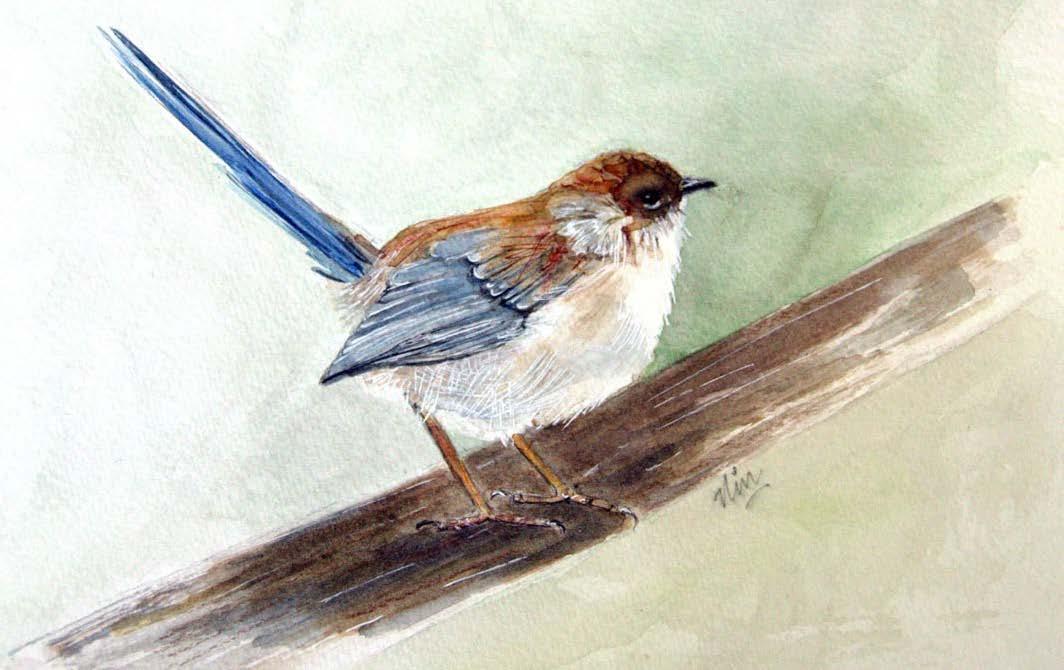

For Ninjit (Nin) Taneja, visiting artist from India, isolation in Melbourne became an opportunity for sustained work on a number of paintings and photos, proving yet again, that art has the ability to keep the human spirit alive.

When Nin arrived in Australia earlier this year, little did she know that she would be stranded for an indefinite period of time, unable to return home to her loved ones.
Her flight touched down in Melbourne only a few hours after the phase two restrictions were announced, and she went straight into a two-week self-isolation.
This meant she missed her own daughter’s court wedding. She watched the civil ceremony through Skype along with other members of the family, spread around the world, including her husband and son who were in New Delhi and unable to travel.
Surprisingly Nin was not fazed.
“I have travelled to many parts of the world but this trip will be forever etched in my memory, for all good reasons,” she told Indian Link.
Initially, for Nin, the self-isolation at her nephew’s house in Point Cook was a welcome relief from the hectic life in Delhi that she had left behind. She felt relaxed and enjoyed the peace and quiet of being on her own for 14 days. Her only


regret was that she was unable to be part of her daughter’s special day.
However, once out of isolation, she was able to attend her daughter’s traditional wedding ceremony held at home. “We
20 JULY 2020 www.indianlink.com.au ART
“The parrots, rosellas, miners, honeyeaters and of birds that I spotted fascinated me endlessly.” Nin Taneja
Wren female
New Holland honeyeater
Pelican
A BIRD
Indian artist Nin Taneja spends lockdown in Melbourne painting winged friends
attendance,” said Nin as she described the unusual proceedings. “I put the traditional mehndi on my daughter’s hand and the chuda ceremony was held early morning whilst we were still in our night suits,” she laughed. “The baraat travelled from ground floor to top floor where the ceremony was held in a prayer room and the pheras were conducted through religious chants and music on YouTtube. It was simple yet sweet and still very special,” she said smiling contentedly.
As a present to the newly wed she made a painting of two birds sitting together using a colourful palette for eternal joy and happiness (see right). “I generally work with greens and yellows but this time I changed my colour palette,” said Nin. “Luckily, I had packed some paint and brushes as a last minute impulse, even though at that stage I had no idea my travel plans would change dramatically!”

Nin’s flight back to New Delhi was cancelled within a few hours of her departure when India closed its borders with little warning. Even though she was very disappointed with the uncertainty, she resiliently decided to make the most of her time in Melbourne. Her art came to her rescue.
trees and plants. The parrots, rosellas, cockatoos, noisy miners, honeyeaters and the amazing variety of birds that I spotted during my walks fascinated me endlessly,”she revealed.
Nin also managed to attract a lot of birds to the backyard feeding them, taking photos, sketching and painting them.

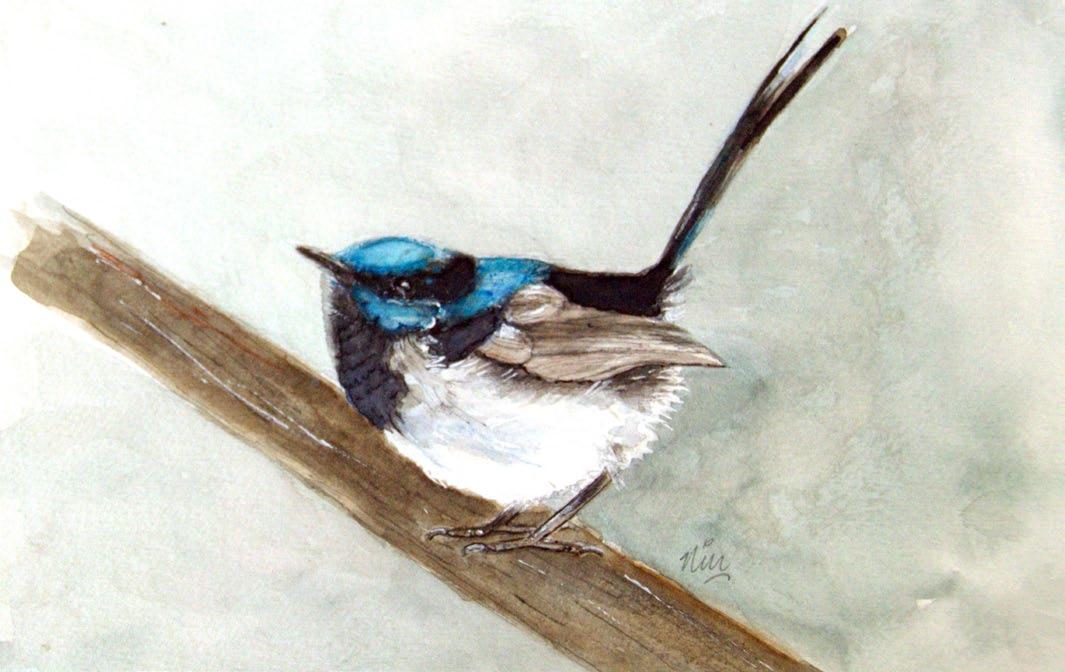
She has been painting for more than two decades and her works adorn some of the prestigious places in New Delhi. As a professional artist she works and takes classes from her studio in New Delhi and has successfully displayed and sold her art in many galleries, shows and art camps. Besides being an avid bird lover and photography enthusiast, Nin also enjoys painting in all mediums including metal. She also supports the Nature Forever Society in Nasik founded by Moh Dilawarit works for the conservation of sparrows that are facing extinction.
Her particular affinity for winged friends is revealed in her paintings. “This was the best time, I felt, to revel in nature’s interconnectedness. I was simply delighted with the diversity and boundless magic of the natural world around me.”
ensured that we observed all the traditions and rituals of a Sikh wedding despite the restricted numbers and lockdown limitations,” shared Nin enthusiastically.
“Only the immediate family was in
Armed with her DSLR camera Nin took to bird watching and exploring the flora and fauna native to Australia. She spent hours walking, taking pictures, painting birds, reading and researching on them and appreciating the beauty that surrounded her.
“One thing that I appreciate most about Melbourne is the aesthetically planted
After two months stranded in Melbourne, Nin was able to secure a seat on one of the early repatriation flights to New Delhi.

Another round of quarantine followed, but through it, Nin was sketching and taking her online classes.
Reflecting on her extraordinary journey, Nin said, “I am grateful that I utilised her time in lockdown well; it was an experience that nourished the soul.”
JULY 2020 21 NATIONAL EDITION
rosellas, cockatoos, noisy and the amazing variety during my walks endlessly.”
Artist Nin Taneja
Hooded pigeon
Wren male
Amit Chakma joins UWA as new vice-chancellor
Australia appointment tops an exceptional academic career in Canada
The University of Western Australia in Perth has this month welcomed Prof. Amit Chakma as its 19th Vice-Chancellor.

Prof. Chakma brings with him great experience in higher education leadership and academia in Canada, most recently 10 years as President and Vice Chancellor of The University of Western Ontario in Canada.
“I’m very much looking forward to meeting the wonderful staff and students at UWA and finding my way around this very beautiful campus,” Prof. Chakma said. “My main focus will be to connect with the UWA community as we look to recover and rebuild following the devastating effects of the COVID-19 pandemic.”
Born in Chittagong of then East Pakistan, Chakma completed his schooling in Bangladesh. In the early ‘80s, he moved to Vancouver to complete his post-graduation. He has been the winner of Canada’s Top 40 Under 40 Award and a technical advisor to engineering companies, research organisations, universities, and government agencies in Canada, Japan, Norway, and the US.
Chakma holds a Master of Applied Science and a PhD in Chemical Engineering from the University of British Columbia. His research interests include greenhouse gas control technology, energy and environmental model system modelling, and petroleum waste management.
“I have been deeply impressed and
moved by the responses of the students and staff of the University that I have seen to date. It is very clear that I shall be working with people of remarkable resilience and strength, with the capacity to act innovatively, compassionately and energetically,” he said.
In June, Chakma and his wife Meena flew to Perth from Canada for the new role and spent two weeks in self-isolation as per Government requirements. He looks positively at this new move to Australia and UWA.
“Like all universities worthy of the name,
UWA is a creator of new knowledge and a custodian of intellectual endeavour, evidence-based enquiry and academic freedom. They have never been more needed than they are now,” he said. “We must also be mindful of our responsibility to the local community we serve, ensuring we act to benefit the social and economic wellbeing of the people of Perth and Western Australia.”
From 2001 to 2009 Professor Chakma served as Vice-President (Academic) and Provost of The University of Waterloo in Canada. He was inaugural Chair of the U15 Group of Canadian Research Universities and has held senior advisory positions with the Canadian Government on international education strategy and science, technology and innovation.
UWA Chancellor, Robert French AC, said Professor Chakma came to UWA with demonstrated success in developing high quality teaching and learning while building research capability and important partnerships across academic, government and industry sectors.
“He is committed to combining research excellence with outstanding student experience and has also demonstrated a strong commitment to diversity and equity in access to higher education. Professor Chakma has a proven track record and the necessary combination of experience, skills and capacity to lead the University at this important time in its history,” the chancellor said.
And now, charter flights for repatriation
from Oz,
Following the successful Vande Bharat repatriation flights, charter flights have now been introduced to help take stranded Indians back home. In an initiative of well-known Melbourne-based travel professionals Gaura Travel and award-winning airline Singapore Airlines, flights to Delhi and Bombay are due to take off in late July.
Ashwini Sonthalia of Gaura Travel told Indian Link, “It all started with the announcement by Hardeep Singh Puri, India’s Civil Aviation Minister, that India will now allow private airlines to operate repatriation flights. After this announcement, we got in touch with Singapore Airlines and worked on a contract with them to operate the flights. Concurrently, we also contacted the High Commission of India in Canberra to seek their permission. Encouraged by the
courtesy Gaura Travel
approval when the flight is full. Once you are approved by the Indian Government, we will request your full payment.”
A No Objection Certificate will then be sought from the local Indian Consulate, following which the e-tickets will be issued.
responses from both Singapore Airlines and the Indian High Commission, we created a whole new website in order to facilitate the distribution of tickets for these repatriation flights. On 4 July, we put these tickets on sale.”

A Sydney to Delhi flight is scheduled for 22 July, and a Melbourne to Delhi flight on 23 July. The cost is $1895 for Economy & $3300 for Business class.
“Economy class for the Melbourne to Delhi flight is now sold out, with more than 100 people on the waiting list,” Sonthalia revealed. “All interested to book can simply
visit https://charter.gauratravel.com.au and all information including frequently asked questions are there. If anyone has any further questions, they can call Gaura Travel on 1300 FLY INDIA (1300 359 463). Our customer service line is available 24/7.”
Interested travellers are advised to read the terms and conditions on the website first. Bookings are made with a 5% deposit. (This deposit is refundable, in case the flight is not full and/or there is a reason to cancel the flight.)
“The next step involves sending your details to the Government of India for
Gaura Travel has served over 100,000 customers and sold over 1,000,000 flights over the past 12 years.

“Since May, we have been getting calls daily to see if we can book on Vande Bharat flights,” Sonthalia revealed. “Each time we had to say ‘you only be booked directly with Air India.’ So, as soon as the Government of India allowed other airlines to operate such flights, we wanted to try and help as many distressed Indians are still stranded in Australia. This is in line with our motto, ‘Your best way home’.
Pawan Luthra
22 JULY 2020 www.indianlink.com.au AUSTRALIA-WID e
Deakin University tie-up with Rajasthan Royals

certificate program will help players gain skills in sports marketing
Melbourne’s Deakin University and IPL team Rajasthan Royals have collaborated for Certificate Programmes in Sports Marketing that is open to all, including all Indian Premier League (IPL) players, past and present.
The program was launched in March and has received an overwhelming response from Rajasthan Royals players. The likes of Jos Buttler, Jaydev Unadkat, and Varun Aaron are nearing the completion of their opted course.
“Both the Foundation and the Advanced levels of the course will be available for the players. The programme is aimed at upskilling the current and former players, helping them add new skills related to the sports industry beyond the cricketing-field,” said the Rajasthan Royals in a statement.
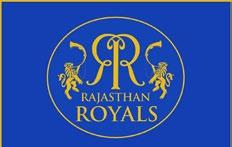
“As a franchise that believes in all-round
development, Rajasthan Royals hope that the course helps all the players learn and develop new skills during these unprecedented times.”
The Foundation course offers a taster to the core areas of sports marketing and gives an insight into the complex and fascinating nature of the sports industry. The Advanced course is aimed to equip those who are seeking to enter the sports sector, while also upskilling those already in it.
These courses, along with all relevant information are available to buy online via the Rajasthan Royals website. Successful learners will receive a certificate upon completion of the course. Students enrolling in the course will learn and refine skills in modern marketing concepts and practices used in the sports industry.
“We’re extremely happy to be working with the National Cricket Academy (NCA) through BCCI to provide the Online Sports
Marketing course to current and former IPL players on a complimentary basis,” said Rajasthan Royals Chief Operating Officer Jake Lush McCrum. “With many players still unable to practice and compete, we are delighted to offer them another way to stimulate their mind and develop a new set of skills, through this purely online course. We would love it if these courses inspired many of them to enter the sports industry when their cricket careers are over.”
Currently in its fourth year of the association, Deakin University was the first Australian University to partner with an IPL team and has been the official sports education partner for Rajasthan Royals. Jointly the partners have promoted sports education in India and facilitated research in sports management and sports science while stressing the need for participation of women in sport.
When Bollywood collaborates with local talent
New film ‘My Melbourne’ to premiere at IffM next year
In a new project titled My Melbourne, Mumbai filmmakers Kabir Khan, Imtiaz Ali, Rima Das and Onir will mentor selected Victorian filmmaking teams to create one compiled film which will premiere at the Indian Film Festival of Melbourne (IFFM) next year. The short films will be based on themes of race, disability, sexuality and gender.


“This exciting initiative gives Victorian screen practitioners a once in a lifetime opportunity to work with some of the world’s best filmmakers and also develop relationships with them,” said IFFM Festival Director Mitu Bhowmick Lange.
“I am delighted and thrilled that IFFM has

secured four of India’s most diverse voices of independent cinema for these workshops and the creation of four short films on the core values of IFFM – diversity and inclusivity.”
The festival is calling for authentic migrant experience story ideas. Each of the four selected teams will be assigned a budget to create an original script, striving for creativity, originality and pure storytelling.
Kabir, Imtiaz, Rima, and Onir will workshop and develop the selected stories and oversee pre-production with the teams via Zoom. Once travel restrictions are lifted, the four filmmakers will travel to Melbourne to shoot the films.
“The last few months have been full of
life lessons for all of us. Viewing stories of identity in the context of the diverse society that we are all a part of is quintessential for us to chart our path ahead. I am looking forward to meeting a new set of people and understanding their life stories for the screen,” said Imtiaz.
Onir feels the role of a filmmaker is to trigger a dialogue. “The world we are living in calls for fresh discussions on inclusivity and diversity to reiterate strong value systems for our audiences. I am glad for the opportunity and hope it’s a step in the right direction,” he said.

Rima considers it as an honour to receive this invitation.
“It’s essential for filmmakers to examine the world around them from the prism of its socio-political context. The short film will allow us to bring in authentic livedin stories that often get lost in popular culture,” she said.
Kabir feels that celebration of “our diversity is a dialogue that should be fostered in current times. In the postpandemic world, being one with each other in a community should be the single most important takeaway. The virus has shown us the futility of everything else. I am excited at the opportunity presented by IFFM and looking forward to the experience”.
JULY 2020 23 NATIONAL EDITION
Onir
Imtiaz Ali
Rima Das
Kabir Khan
A very old Indian link in Tasmania’s Lufra Hotel
How an orphan boy from c alcutta became a well-known Tasmanian in the early 1900s
BY JYOTI SHANKAR

On a trip to Tasmania late last year, we stopped for lunch at the well-known Lufra Hotel enroute to Hobart from Port Arthur. A sumptuous meal later, while leafing through reading materials in the lounge of the historic hotel, we were surprised to discover an Indian link in a file of photos and newspaper stories – in the form of Chokey Nuroo, who owned the hotel for over 30 years.
Curiosity got the better of me and I started to dig into Chokey’s story on return.
Thanks to the internet and genealogical websites, I was be able to trace and speak with ex-General Manager Peter Derkley, who had painstakingly put the file together, as well as Chokey’s descendants - Tania Oakley, great grand-daughter; Sheryl Dorrington, grand-daughter; and Kay Hendley, the grand-daughter of Jules Joubert, the man who brought Chokey from India to Australia.
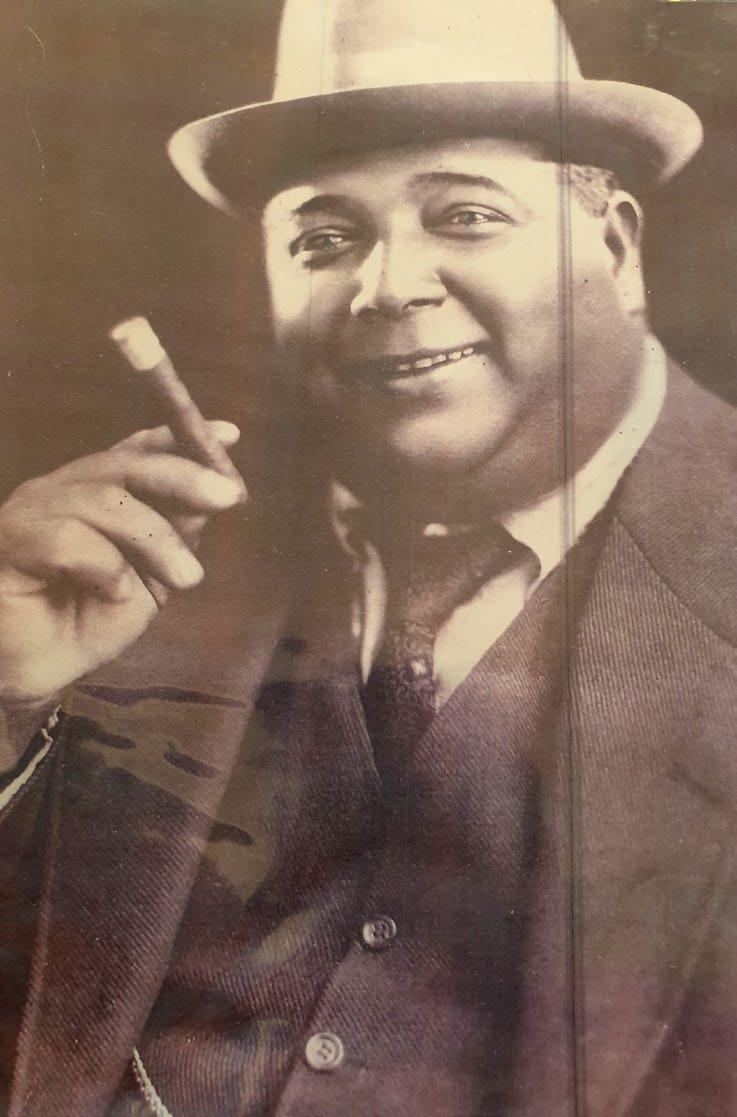
Peter says he was intrigued by how Chokey, apparently an orphan boy, came to be a well-established gentleman in Tasmania. There is no available information about Chokey’s background, but what is known is that the young boy landed in Australia with Jules Joubert, a well-known figure in Australian history. Jules was the first chairman of the Hunters Hill Council in Sydney and was instrumental in building many of the old stone houses one sees around this posh suburb today.
Later he turned to organising exhibitions the world over, earning himself the title of “Exhibition wallah” in India when he organised a year-long international exhibition in Calcutta in 1882-83, an indication of intercultural transactions between India and Australia over 100 years ago. Jules wrote a travelogue of his journeys over the years in the book Shavings and scrapings from many parts, probably the first Australian to have produced such a perceptive narrative of India. He doesn’t mention his family or Chokey in his book, but it is widely believed by both sides of the family that it was in Calcutta that Jules found Chokey, a young boy of nine then.
Was Chokey a stowaway on the ship in which Jules returned to Australia? Was he Jules’ love-child in India during his earlier travels? Did Chokey run away from home and befriend Jules at the exhibition? No one knows for sure. Chokey’s name is mentioned as Chokra, Chokria, Chokey

SP ec IAL fe ATUR e
Chokey Nuroo
and Charles in various documents and newspaper accounts. ‘Chokra’ means ‘boy’ in Hindi, so was this just a generic term used by others to beckon him? All these questions will probably remain unanswered unless Chokey himself left a memoir that is not yet discovered.

Jules’ granddaughter Kay says that by her family accounts, Chokey grew up as one of Jules’ own in his large family with wife and ten children on return from India. They lived in a house called Moocooboolah on Alexandra Street, Hunters Hill.

In 1891, Jules and Chokey arrived in Tasmania to organise exhibitions at Launceston and Hobart, with news reports of the time calling Chokey "Joubert's Indian valet". Chokey stayed back in Tasmania, perhaps having met his wife Ada by then and ready to start his own life. He became a provedore of steamships that plied on the channel between mainland Australia and Tasmania.
In 1906, Chokey Nuroo bought a
property which was a sanatorium at Eaglehawk Neck and re-opened it as a licensed hotel called the Lufra. From all accounts, he became a much-loved








character in Eaglehawk Neck. Some interesting facts about his life have been unearthed from old newspapers and records. Throughout his years at Eaglehawk
Neck, Chokey diligently provided rainfall updates to the Bureau of Meteorology. In his later years, when he was a wellrespected Tasmanian; he lobbied for a bridge to connect the eastern and western shores of the city of Hobart. According to his granddaughter Sheryl, there were stories in the family about Chokey doing business with just a handshake.
When he died on 5 February 1941 at the age of 66, Chokey Nuroo’s service at the crematorium at Cornelian Bay was packed. His ashes were interred at Clyde Island off the coast of Pirates Bay, where a plaque still stands. He was survived by his wife, four daughters and three sons. His wife continued to run the Lufra Hotel for another few years before selling it to Reg Ansett.
Uncovered almost by accident at the Lufra Hotel, it was fascinating to explore the stories of chokra Nuroo, a rare Indian who made it big in Australia over 100 years ago, from his unknown beginnings in Calcutta.
 Lufra Hotel now, and (below) in the early 1900s
Chokey with his family, and (right) his tombstone
Lufra Hotel now, and (below) in the early 1900s
Chokey with his family, and (right) his tombstone
A retirement home for cows
At the New Govardhana Farm in NSW, aging cows are taken care of almost like human retirees

 BY BAGESHRI SAVYASACHI
BY BAGESHRI SAVYASACHI
Gita Govinda Dasi is talking about the retirees that she cares for at an old-age home in north-eastern NSW.
“We check them every day,” she says. “They have aches and pains, often rheumatoid arthritis among other aging problems.”
The retirement home at Australia’s largest Hare Krishna community in Murwillumbah NSW is an old-age home of a different kind.
As one that is solely dedicated to residents of a bovine kind, it runs a protection-cum-retirement program for aging cows and bullocks who cannot work anymore.
At this ISKCON New Govardhana
farm, aged cattle are taken care of almost like human retirees.
In Hare Krishna philosophy, bovine lives are sacred, just like human lives.
“We’re a community that practices spiritual life,” Ajita Cozzi, the director of the project, tells Indian Link. “Nonviolence doesn’t just mean protecting the animals, but also being aware of their right to keep on living.”
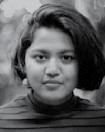
He adds, “The animals have worked for you their entire lives and once they are done with their working period they are retired. It is our duty not to interfere with their right to exist.”
The cattle, raised to work in dairy, farming, and breeding, serve the community as much as they can, and in turn, the devotees serve the animals in their old age.
The concept might resonate well with Australian Hindus: in contemporary India, a visit to the ‘goshala’ (cow shelter) seems to have become just as common as a visit to the local temple.
The program at New Govardhana farm ensures specificities befitting older cattle like improving their pasture, putting up proper fencing so they can graze methodically, and building them shelters. Veterinary services of course are close at hand.

What’s a typical day like for carer Gita?
“I do a headcount of the cows every day, checking them for cuts, scratches, or limping,” Gita explains. “Keeping track of the herd is important, as they tend to accidentally hurt themselves or wander and fall into ditches. I run my eye over every single one of them. The oldies, I give them their morning medication and then check them again in the evening before putting them to bed.”
An animal lover and sworn “servant of the cows”, Gita views these animals as God’s children, particularly cows as mothers who provide. She believes they need love and care just like any other sentient animal, especially older cattle who need closer monitoring as compared
26 JULY 2020 www.indianlink.com.au MAINSTR e AM
to their younger counterparts.
A vast majority of the herd come to the farm from devotees who started up their own projects and whose older cattle find homes here, but many others have diverse backgrounds. Some are donated, and some are life-long pets brought over by folks moving into nursing homes themselves.
Gita also describes how different histories can bring in a variety of temperaments that require special attention.
“One cow, the first time I saw her, was in a barbed wire fence and had been chewed on by dogs. She’s never going to trust me. I feed her every day but I can’t touch her, and even that took about ten years before I could feed her out of my hands.”
The farm of course has just come off a season of terrible drought and bushfires,
during which fresh feed was hard to come by.
“There was no pasture, we had to buy feed and hand-feed the animals every day,” Ajita remembers. “It was very difficult to do and costly, but it was part of our service.”
While devotees are committed to serving these aging animals till their last breaths, Hare Krishna director Ajita Cozzi mentions other ways in which people help the community to care for the animals.


“Some people sponsor cows for $35 a month. They call us or pick a particular cow or bullock online and help provide for their care.”

Say hello to the cows and visit the organic farms at ISKCON New Govardhana farm, 525 Tyalgum Road, Eungella NSW.
To donate or to sponsor a cow, visit www. krishnafarm.net/cow-protection/

JULY 2020 27 NATIONAL EDITION
“Non-violence doesn’t just mean protecting the animals, but also being aware of their right to keep on living.”
Mutter-ing Peas-fully
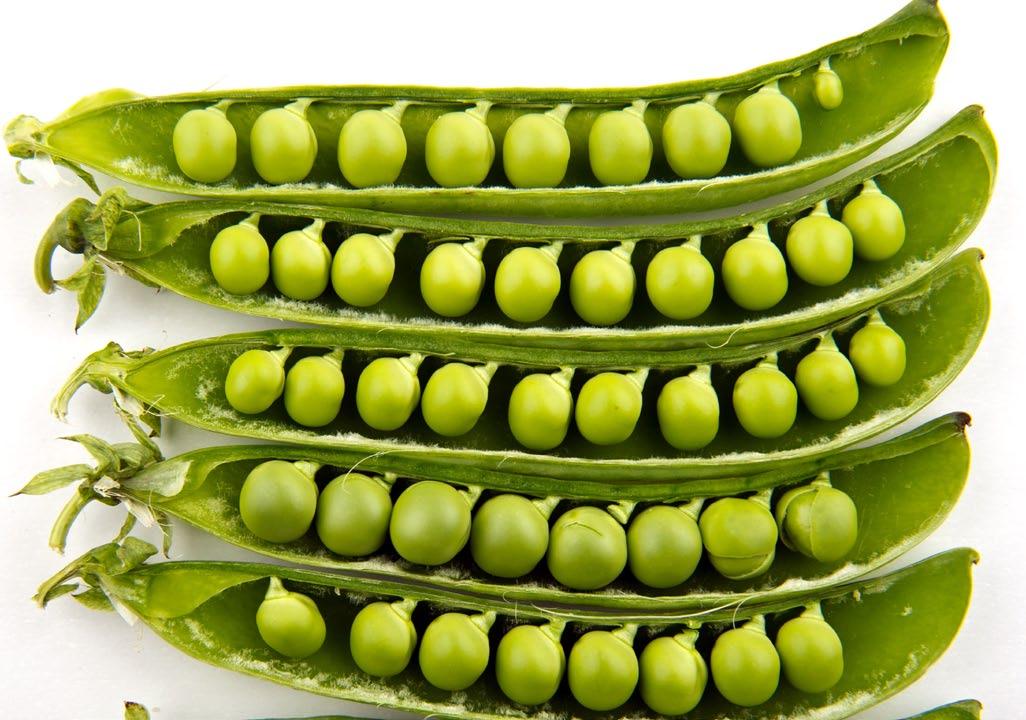
MUTTER KE KABAB
■ 4 medium-sized potatoes, boiled
■ ¾ cup green peas
■ ½ bunch English spinach
■ Green chillies to taste, chopped finely
■ Coriander leaves, chopped
■ 1 tbsp grated ginger
■ 1 tsp chaat masala
■ Salt to taste
■ 2 tbsp cornflour
■ Oil for deep frying.
Give the peas a whirl in the microwave briefly to soften. Mash. Peel and grate potatoes. Blanch spinach leaves in boiling salted water, refresh in cold water and drain well, then chop. Mix together potatoes, peas and spinach. Add green chillies, coriander leaves, ginger, chaat masala and salt. Mix well; add cornflour and bind to a dough.
Make balls out of the dough; flatten each slightly to form a tikki. Deep fry, or shallow fry, in hot oil. Serve with tomato sauce.
(You could also use arbi, boiled and mashed, in this recipe. And an interesting variation to the traditional round-shaped tikki is a tear-drop shape).
CHEESY PE ASY BALL S
■ 2 cups green peas
■ 1 cup plain flour
■ 1 cup tasty cheese, grated
■ 1 large onion, chopped
■ 1 tsp crushed garlic
■ 1 tsp grated ginger
■ Green chillies to taste, chopped finely

■ 2 tsp cumin seeds
■ ½ tsp garam masala
■ 1 medium-sized tomato
■ 1 tsp oil
■ Pinch baking powder
■ A few strands saffron, soaked in a little warm milk
■ Salt to taste
■ Oil for deep frying. Grind peas, chillies and tomatoes together in the mixer.
Heat oil in pan and add cumin seeds. When they splutter, add onions and saute. Add ginger and garlic and fry some more. The add the peas mixture, garam masala, salt, a little water and a tsp of the plain flour. Mix well and cook some more till it all comes together. Remove from heat and add grated cheese. Make small balls out of the peas mixture.
Make a thick batter with the remaining flour, salt, saffron solution and water as required. Dip the cheese-and-peas balls in the batter and deep fry in hot oil till golden brown. Serve with tomato sauce.
MUTTER KE PAR ANTHE
(Padma Baweja of New Delhi provided this recipe).
For stuffing:
■ 2 cups green peas
■ 3 tsp oil
■ Pinch asafoetida
■ Salt to taste
■ Freshly ground black pepper
■ Red chilli powder to taste.
For rotis:
■ 2 cups atta
■ 1 tsp salt
■ Water to make dough
■ Oil for frying.
Coarsely grind peas in the mixer, without adding any water. Heat oil in a pan and add asafoetida and the ground peas. Keep stirring. Add salt, red chilli powder and pepper. Mix well and continue to stir till the mixture leaves the sides of the pan.
Cool.
To make rotis, prepare a dough with the atta and knead well. Use the peas mixture to stuff rotis like you would other stuffed paranthas.
KHOYA MUTTER
(This recipe comes from Usha Sarin of New Delhi).
■ 500 gms peas

■ 150 gms khoya
■ 2 medium onions, grated
■ 2-3 large tomatoes, pureed
■ 1 tsp crushed garlic
■ 1 tsp grated ginger
■ 3 tsp oil
■ 1 tsp cumin seeds
■ 3-4 numbers cloves
■ 1-inch piece cinnamon
■ 4-5 numbers green cardamom
■ Salt, red chilli powder and garam masala to taste
■ 1 tsp turmeric
■ Green coriander for garnish. Heat oil in a pan and add cumin seeds, cloves, cardamom and cinnamon. After about a minute or so, add onions and saute. Add garlic and ginger and fry till onion is browned. Then add tomatoes and mix well. Cook till a sauce-like consistency is reached. (Add water to make a gravy if you wish). Then put in the peas. Add salt, turmeric, red chilli powder and garam masala. Mix well.
Meanwhile, crumble khoya and fry gently in a little oil over a medium flame. Then add it to the peas. Mix to combine well. Garnish with coriander leaves before serving. Goes well with both rotis and rice.
28 JULY 2020 www.indianlink.com.au f OOD
Here’s to peas, or mutter as we call them, in a collection of off-the-cuff winter recipes
by NISHA CHAMAN





















































































JULY 2020 29 NATIONAL EDITION VIRDI ENGINEERS ROOF RESTORATION Professional advice at the lowest price Serving the community for over 20 years Lic. No. 114274C Pay in easy interest free installments* *Conditions apply. Limited period only. Contact Harjit today! Call: 0412 254 015 Fax: (02) 9920 1044 web: virdiengineers.com.au Roof restoration Guttering solutions Whirly birds Driveway cleaning & painting Fencing & retaining walls Skylights Sunrooms Leaf guards Carports, decks, patios & pergolas Wespendourtime tellingyourstories THE TEAM Carl Buhariwala Grahak Cunningham Minnal Khona Preeti Jabbal Devna Luthra Vinaya Rai Kashif Harrison Usha Ramanujam Arvind Mohan Dhall Darshak Mehta Emie Roy Rani Jahla Sagar Mehtrotra Dipanjali Rao Mohan Thite Sai Narayan Sandeep Hor Kira SpucysTahar Nikita Kulkarni Gaurav Masand Kalyani Wakhare Pawan Luthra Jyoti Shankar Priyanka Tater Astha Singh Sukrit Sabhlok Uttam Mukherjee Farzana Ahmad Rajni Anand Luthra Puneet Anand Anup Kumar Sunila Vig Deepa Gopinath Tarini Puri Royston Rebello Raweena Raval Nisha Joseph Hamida Parkar Saroja Srinivasan Shafeen Mustaq Dinesh Raka Sarkhel Komal Utsav Jagad Vish Chilumkurti Sahibnoor Singh Auntyji Yesha Joshi Petra O’Neill Neelam Vasudevan Saroni Roy Avi Chandiok Niraj Pandya Anubhuti Madan Singh Radhika Bhatia Simren Samrai Ritam Mitra Charuta Joshi Beheshta Wasseh Frankey Gerard Fernandes Sydney Srinivas Mital Parekh Dilip Jadeja Dhanya Samuel Virat Nehru Sukesh Thapliyal Neha Malude LP Ayer Nanditha Suresh Aparna Ananthuni Aneeta Menon Sudarshan Arvind
Travelling
 BY SANDIP HOR
BY SANDIP HOR

With intrastate travel restrictions no longer playing spoilsport this winter, it’s no surprise that Aussies are getting ready to explore their own states in these next few months.
From learning about the region’s rich heritage and re-discovering the great outdoors to engaging with Australia’s unspoilt nature and wildlife, NSW has something for every kind of traveller. Apart from the usual suspects, here are our pick of the six best destinations in the region.
U N DER S TAN D IN G CO LO NIAL H IS TORY IN G O UL B U R N
Endorsed by Queen Victoria in 1863 as Australia’s first inland city, Goulburn boasts over 150 years of rich history amidst picturesque natural settings. Two hours’ drive from Sydney and connected by rail since 1860, it originally started out as a wool production hub. By the late 19th century, Goulburn became the epicentre of commerce. Many buildings remaining from that period illustrate its bygone prosperity that resulted from wool farming and a short-lived gold rush.
The colour and charisma of the Victorian-Italian styled Courthouse immediately claim the attention of architectural buffs. When opened in the year 1887, it was touted as one of the most beautiful buildings in all “Her Majesty’s
Dominions”. It’s still in use as the legal powerhouse of the region. Other notable landmarks are the Post Office building with a Clock Tower functional since 1880, the adjacent Town Hall, and several churches and cathedrals.

LE ARNIN AUSSIE M
Nestled west of Sydney near the South Australia border, Broken Hill is the birthplace of Australia’s mining giant Broken Hill Proprietary, more commonly known as BHP. Back in the mid-1880s, BHP began with silver, lead and zinc mines in this outback region. More of Broken Hill’s mining history can be learnt from the geology exhibits at the Albert Kersten Mining and Minerals Museum or a visit to a disused 19th century pit at nearby Silverton.
The best history lesson of all would come from visiting the Line of Lode Miner’s Memorial that celebrates the life and work of more than 800 miners who lost their lives while working in these mines. This arresting dedicatory and lookout point also offers a commanding view over the city of Broken Hill.
SE I Z IN G A SLI CE OF AFR I CA
Encountering wild animals like lions, rhinos, cheetahs, zebras and giraffes in African national parks is a dream for almost everyone. While it’s not possible to travel that far right now, you can still get a little taste of that thrilling experience at Taronga Western Plain Zoo in Dubbo, located in the Great Western Plains region of NSW.



Just seven hours’ drive from Sydney is
WATCH IN G H U M P BACK W H AL E S IN BYRO N BAY
Located almost at the fringe of the Queensland border on NSW’s far North Coast, Byron Bay is one of Australia's best destinations to spot the majestic humpback whale. Between July and October, this distinctive species is on their annual migration from the cold Antarctic waters to warmer breeding grounds in the tropics. With around 17,000 of them crowding the coastline, most tour operators guarantee a close encounter when joining one of their
hangout with aging hippies, idle at cafes, and gorge on good food and wine with the best of local produce.
PLAY IN G WI TH SN OW AT THE KO S C IUS ZKO N AT I O NAL PA RK
Not only is Mount Kosciuszko named Australia’s highest peak, it’s also the source of two of the country’s legendary rivers, the Murray and the Snowy. This daunting 7,300-foot mountain can be found in Kosciuszko National Park in southeast NSW.
30 JULY 2020 www.indianlink.com.au TRA ve L
Six of the best destinations of NSW to enjoy this winter
Iconic lighthouse of Byron Bay
Lion king at the Dubbo Zoo
Just like Africa, a giraffe strolling at Dubbo Zoo
Historic Broken Hill
the Premier State
In the winter, this parkland boasts of almost 7,000 square kilometres of snow, with its resort outposts at Thredbo and Perisher becoming sought-after locations for skiing, snowboarding and other snowy activities.


R E LA X IN G IN THE SO U TH C O AS T
Blessed with a mild climate, this narrow coastal belt of around 550 km nearing the Victorian border is a relaxing haven. It’s home to some idyllic beaches, pristine lakes, rolling farmlands, and untamed national parks. The South Coast is also teeming with good food and wine outlets in small towns and villages. Places like Stanwell Park, Kiama, Berry, Huskisson, Vincentia and Mollymook are some of the hideouts popular with visitors seeking the laidback country lifestyle.
TRAVEL NOTEBOOK
Getting there: There are regular regional flights to Byron Bay, Broken Hill and Dubbo. Other places are easily drivable from Sydney Stay: Plenty of accommodation choices from hotels, motels to holiday rentals served by Airbnb (www.airbnb. com.au)
More Info: www.visitnsw.com






JULY 2020 31 NATIONAL EDITION
Byron Lighthouse
Yoga on a Byron Bay beach
Goulburn landmark South Coast beauty
Skiing at Thredbo
Snowy adventure at Thredbo


32 JULY 2020 www.indianlink.com.au
Building a water smart garden

 BY DHANYA SAMUEL
BY DHANYA SAMUEL
The recent Level 2 water restrictions in NSW got Gauri Maini thinking about her own carbon footprint. She found it increasingly difficult to maintain the young plants in her garden and began replacing them with Australian native plants that would help increase biodiversity.
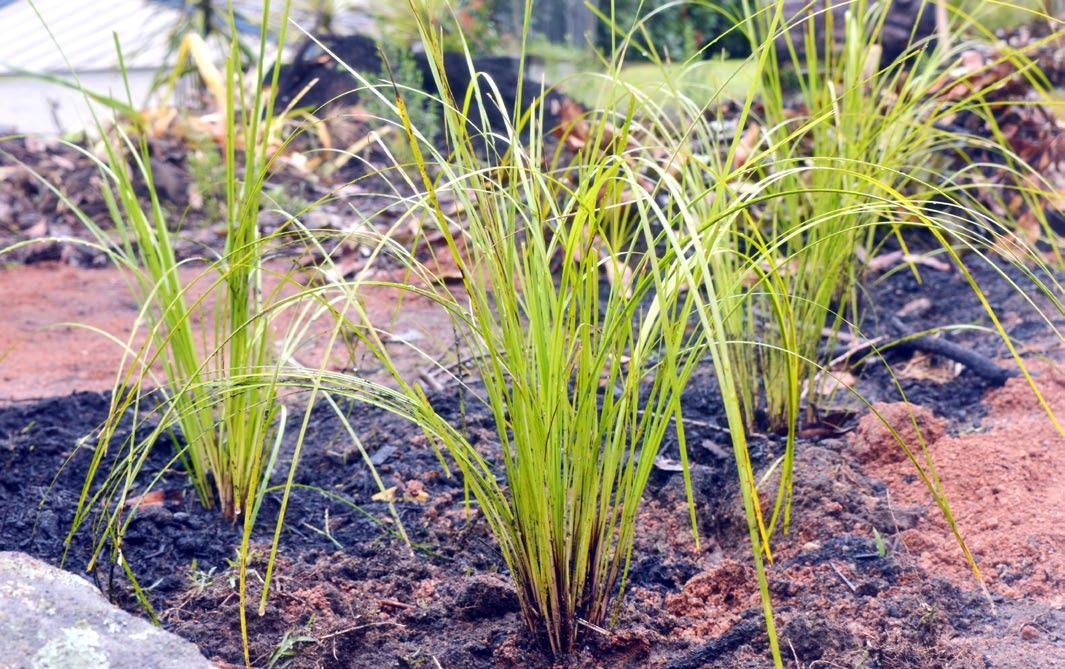
That’s when she came across the environmental levy grant in the Ku-ringgai Council newsletter. Around that time, she also became aware of the work done by Michael Mobbs (who has been living off grid in Chippendale for 20 years and is an expert in providing low cost, simple solutions to cool cities). Gauri pitched for a grant especially when she read more about Michael’s work in designing gardens that retain the rainwater in the soil.
Having procured the grant, she began work on designing the garden.
“We know from statistics published by the Bureau of Meteorology that up to 90

percent of rainfall is lost to our storm water systems, carrying pollutants with it which can be useful for enriching the soil,” she explained. “In order to retain rainfall, ag pipes, which are essentially perforated pipes that collect and evenly disperse rainwater, are laid 10 centimetres deep along the perimeter of the garden, on a bed of gravel. This helps soak in the water and retain it for even distribution, deep into the sub strata.”
She went on, “The ground is also levelled such that rainfall is directed
towards the garden instead of into the streets and storm water systems. So the ag pipes and soil retain all the moisture deep where the root systems of the plants can get it when they need it. In addition, the garden incorporates in-ground composting that turns all food waste into precious nutrients through worm activity, thereby reducing carbon emissions from the alternate, which is transporting food waste to offsite recycling or worse, landfill.”
Existing high maintenance lawns were
replaced with drought resistant Australian native plants. These establishing plants and soil moisture will enable a cooler microclimate. Gauri intends to continue measuring this on an ongoing basis as the garden establishes.

For an 80 square metre garden, the cost of materials was $850 plus labour and design costs. Gauri did the landscaping herself to minimize costs; she says that this design can easily be replicated by anyone who wishes to do so.
“If one or maybe 500 of you decide to build a garden around similar design principles, we could potentially save millions of litres of water, create cooler micro climates around our home, reduce pollutants in our water systems and create habitat diversity for bees, animals and birds.”
Gauri hopes that more and more people will take up this initiative that is so easily achievable.
“We have a councillor interested in providing similar benefits to residents. We would be very happy to share design and implementation notes to facilitate adoption, so more people can do their bit in promoting biodiversity, cooling climate, reducing waste and water consumption,” she concluded.

JULY 2020 33 NATIONAL EDITION GARD e NING
Gauri Maini and Michael Mobbs designed and built a water smart street garden using an environmental levy grant from Ku-ring-gai council, NSW.
A wicking bed (Source: ABC)
cineTALK
SU S HMITA SEN PROP S LAZY CRIME DRAMA
seems bad guys keep their black deeds documented in black pen drives.
From trailer and previews, you would have the broad idea that circumstances will force the home-maker Aarya to take over her husband's trade. Yet, when that momentous event does happen, there is absolutely no spark - save the bit of shimmy swag that Sushmita exudes as she makes her way to her husband's chair, backgrounded by retro Bollywood score.
AARYA (Disney+ Hotstar)
STARRiNG: Sushmita Sen, Chandrachur

Singh, Sikander Kher, Namit Das, Ankur Bhatia, Maya Sarao, Jayant Kripalani, Vikas Kumar, Alexx ONell, Manish Choudhary, Vishwajeet Pradhan
CReATOR: Ram Madhvani
H H H
Aarya starts off with a couple of advantages. It marks the return of Sushmita Sen, a fact that has helped the show pump up hype over the past weeks. Secondly, there’s proven core content at hand. The show is based on the Dutch series Penoza, which saw a whopping run of five seasons, and which has already inspired an American rehash, Red Widow.
Both the advantages, however, come with a catch. There was always the challenge of moulding the uber-glamour of Sushmita Sen - still India's first Miss Universe in the minds of most - into a protagonist that fits the scope of a web series (it is a challenge that her Bollywood directors mostly never tried tackling, which often saw her essay the ‘other heroine' in two-heroine projects).
On the second aspect, what worked
MATRIMONIALS
SEEK IN G G ROOM S
Professionally qualified match (b/w 31-38 years) for ‘88 born 5"3" Hindu Punjabi girl, divorced (short marriage, issueless). Full-time government job in Sydney. Pref teetotaller. Aus PR/Citizen only.

Email: matrimonial.ml@gmail.com
Seeking suitable professional boy born and brought up in Sydney for young attractive girl, never married, 33, 5'2", born and brought up in Sydney. Professional educator, Hindu Indian well settled family. Please contact Preeti Kothari 0404316288.
Beautiful, 34-year-old, highly educated girl, with very good family background, soft spoken, career oriented, vegetarian Brahmin, working, well settled in Sydney, seeks an educated, teetotaller match with good family background. Prefer Australian

in Dutch may not necessarily work for a ‘desi’ revisit.
It's obvious right from the start that writer-creator Ram Madhvani's primary labour over nine episodes lay in setting up a saleable, author-backed showcase to highlight the Sushmita factor, with his Indianised imported plot.
Sushmita is Aarya Sareen, alpha mother of three, and she is hanging upside down defying gravity, executing a complex inversion workout, when we first meet her. The scene is perhaps symbolic, meant to tell us how ‘in control’ she can be, when her world turns upside down. Which doesn't take long to happen actually. Beneath the veneer of a happy family, where Aarya wants to give her kids a normal childhood, we soon learn the Sareens are not ‘normal’ people. The regal lifestyle owes itself to dealings more than meet the eye.
Aarya's husband Tej (Chandrachur Singh) and his partners are drug mafia, running their trade under the garb of a pharmaceutical business.
The tele-play aims at building its storyline gradually over the episodes - only too gradually you would think, after the opening episode gives the
citizen or PR. Please contact rajsyd83@ gmail.com
SEEK IN G B R I DE S
Indian Christian Protestant parents, seeking a suitable match for their 40-year-old son, a Software Engineer born and brought up in Australia. Seeking a Protestant girl between 32-37 years.
Email: sammy5073@gmail.com
Mob 0403836360
Wanted suitable match for 36-year-old Brahmin boy, 5’-8’’ fair complexioned, well settled in Australia,in his own successful business.
Contact kumar.sham@bigpond.com
Seeking match for educated, divorced, 5’9', 1975-born Sikh Boy, self-employed on bridging visa with full work rights. Looking for PR/Citizen match from Australia.
Phone: 0422 812 939 or
email: jas_ghai01@hotmail.com
show a dramatic plot-pusher, not to be revealed for the sake of shielding spoilers. That momentum, however, gets squandered as Madhvani's narrative tries accommodating too many sub-plots for too many characters. The average runtime of each of the nine episodes ranges from around 45 to 55 minutes. You wish Madhvani and his co-directors (Sandeep Modi and Vinod Rawat) had stuck to the point, restricting the show to maybe five episodes of 30 minutes each with sharper editing.
In fact, that nutshells the whole show. It is a lazy drama propped by Sushmita's screen presence in particular, as well as rest of the cast. Fans of Sushmita won't be disappointed, though. After a decade of absence from the Bollywood screen (five years if you consider she did a brilliant Bengali arthouse film called Nirbaak in between), the actress returns to prove that she has lost none of her edge. Be it as the doting mom or the cold avenger, Sushmita's Aarya Sareen is a balanced and believable act.
BAAZAAR
DIRECTOR: Gauravv K. Chawla
STARRING: Saif Ali Khan, Rohan Mehra, Radhika Apte, Chitrangda Singh HHHHH
Pace is not the only problem. Despite basing its narrative on something as promising as a thriller about drug running and the deceptions that come in its wake, Aarya cannot boast of many authentic moments that thrill.
I can’t recall a single notable (or even non-notable) Indian lm based on the plunging dips and giddying highs of the stock market. Do you remember Harshad Mehta? How could you forget the podgy stockbroker who made thousands of Indians rich overnight and then it all ended in a nancial mess in no time at all?
Two other actors who particularly stand out are Jayant Kripalani and Maya Sarao. Kripalani, who also returns on screen after a hiatus, is Aarya's father Zorawar, with a deceptively pleasant disposition that he pulls off effortlessly.
Machiavellian stockbroker is everything that Harshad Mehta would have wanted to be. This is Saif’s most gloriously written and performed part, meaty witty and wicked. He chews into it exposing a sacred hunger that I didn’t notice in his last over-hyped outing.
Maya Sarao is Maya, Aarya's close friend and the wife of one of Tej's partners, Jawahar (Namit Das). Although Maya is really a secondary character, she gets her moments, letting Sarao score.
Saif Ali Khan’s Shakun Kothari’s destiny run on the same lines. Except that Saif as the wily ruthless
The most disappointing aspect is what the entire series ultimately decides to settle upon, for a ‘storyline’. Without giving away the plot, for all its intriguing premise, this is a hackneyed story about cops and mafia gunning for a USB stick that contains - ahem - secrets that could bring down the drug empire. It reminds you of those B-flicks of yore. Back then, they would all be chasing a little black diary of ‘kachha-chittha’. Nowadays it
Saif as Shakun is a true-blue Gujju who won’t let neo-af uence corrupt his cultural integrity. He slips into Gujjucations with the unrehearsed cuteness of tycoon, who has long ceased to be cute to everyone, including his own wife and children.
Most of the others in the cast are adequate.
Aarya leaves open the scope for an obvious season two going by its final scene. For a few thrills more, we will hope Madhvani and company serve it headier the next time.
Vinayak Chakravorty
him have. Rizwan’s a bristling her nale. He down moment in of the come ‘When (Nikhil Arora)
34 JULY 2020 www.indianlink.com.au
e NT e RTAINM e NT
36 NOVEMBER 2018 AUGUST
can
with.
18C constrains speech.
likely… humiliate another
people” is done race, ethnic person There that is important important the democracy. of speech when ballot an informed about Freedom a community, and decisions Section role A cannot Australians speech Section • Reliable Service and Privacy Guaranteed • Over 25 lenders to choose from • Commercial finance Health check for existing Home Loan
until I met Swati” – Komal Over 18 years of experience in finance industry. Talk to a qualified professional. Dandenong and Springvale Call Swati Palsule on 0411 78 28 18 Authorised Credit Representative 400349 of BLSAA Pty. Ltd. (Australian Credit Licence No.391237) Talk to a specialist for all your Home Loan needs THERE IS NO SUBS T I T U T E FOR EXPERIENCE. swati@buyerschoice.com.au
the
Athe the towns. in the and celebrated country: Year, Ramadan to name However, of the peoples reminder been reminds achieved The the put current
That unlawful public
of
“I
used to think that all mortgage brokers are the same....
When debutant Rohan Mehra enters the plot as Rizwan there is no Shakun Kothari around. We know Rizwan idolizes Shakun and wants to be like cineTALK ENTERTAINMENT
WELL INTENDED BUT HALF-BAKED
RASBHARi (Amazon Prime)
S TARRi NG: Swara Bhasker, Ayushmaan Saxena, Neelu Kohli Di R eCTOR: Nikhil Bhat HHH
Rasbhari tries to be erotic and edifying at the same time. The idea is to set up a quirky, coming-of-age drama in smalltown India buoyed by sexual fantasy. Layered within is a subtext that teases with the paranormal, in a bid to leave a broader comment on the societal urge to scuttle a woman’s sexuality.
Nikhil Bhat’s series spreads its dual idea over eight episodes. You have Swara Bhasker as the sizzling English teacher Shanu, who arrives in smalltown Meerut with her husband and immediately conquers all the male hearts, sending boys and men alike on a trip of fantasy.
Among Shanu’s besotted brigade is Nand Kishore (Ayushmaan Saxena) whose big dream is to lose his virginity before he finishes high school. The problem is Nand seems to develop brotherly vibes with almost all the girls he knows, and that includes the odd one who makes her advances quite apparent to him. Shanu’s arrival changes his life. Suddenly, Nand falls head over heels for the English teacher.
Shantanu Shrivatava’s writing adds a spin to the narrative here. As Nand is drawn to Shanu’s allure and even signs up for private tuitions to get close to her, he begins to hear unpalatable things about her. He learns that Shanu
has been making out with many of the guys about town. As the town’s women prepare to lead a charge against Shanu for snatching their husbands, the mention keeps coming up of Rasbhari, the teacher’s alter ego who, we are told is the spirit of a courtesan.
Is Rasbhari to blame for the sexual transgressions that Shanu is blamed for? Or is she merely an imagination figment to let Nand protect his beautiful perception of Shanu?
Or, Rasbhari is perhaps a metaphor of Shanu’s liberated sexuality, something that small-town societal norms do not condone in a woman.
Rasbhari obviously set out to craft a strong statement, but the narrative struggles to put across its point. Writing erotica for the screen can be tricky business, and one would really have to strain one’s imagination to think of sexually-loaded content in Indian mainstream that has assuredly put across its point. Rasbhari comes across as a layered allegory but the storytelling doesn’t always come up with the right nuances to support the notion.
It doesn’t help either that the actual story takes time to start. The series of eight episodes tests your patience over nearly half of its runtime before the story really starts warming up.
This is Swara Bhasker’s show, and if you can overlook a wardrobe that seems randomly borrowed from Sushmita Sen’s in Main Hoon Na, she manages to make sufficient impact in an author-backed role.
 Vinayak Chakravorty
Vinayak Chakravorty
F RIGHT FABLE DOE S N’T QUITE HIT THE MARK
BULBBUL (Netflix)
S TARRi NG: Tripti Dimri, Avinash Tiwary, Rahul Bose, Paoli Dam, Parambrata Chattopadhyay Di R eCTOR: AnvitaDutt
HHH
Why must women wear toe rings, little Bulbbul asks her aunt. “So that they can be kept under control,” the aunt replies. “What is control?” the girl whispers innocently, as the aunt carries Bulbbul in her arms to her wedding mandap, to be married off to a rich landlord, decades older.
The conversation does set the tone for a fascinating feminist allegory right at the start of this tale.
Bollywood lyricist-writer Anvita Dutt makes the season’s most exciting directorial debut with Bulbbul, a classic horror reorganised to make a solid statement about gender abuse. The setting is late 19th century Bengal, amid the lavish excesses of babu-dom. It is a world that has traditionally rendered rich aesthetics to the Bollywood screen - from every Devdas worth a recall and Sahib Biwi Aur Ghulam to Parineeta or Lootera. It is also a world of colourful,

chauvinistic amorality, films and fiction of the past have often portrayed.
To that milieu, Dutt and her creative team add hues of horror, shifting the mood from sombre dark tones to the ominous glow of the blood moon that symbolises vengeful carnage unleashed by womanhood wronged.
The story starts off with child bride Bulbbul getting married to the rich zamindar Indranil (Rahul Bose), who is much older. Indranil’s mentally unstable twin brother Mahendra (Bose in double role) has a roving eye for the child bride, it becomes obvious right away. The only person Bulbbul can relate with at her in-laws’ place is Satya, Mahendra’s youngest brother who is just a few years older than her.
Fast forward 20 years, and Satya, a strapping young man (Avinash Tiwary), returns from London after studying law. Timid little Bulbbul has morphed into the assertive young mistress (Tripti Dimri) of their ancestral mansion. Satya hears strange tales, of men in the village being killed by a ‘chudail’ (demon woman), even as he starts falling for Bulbbul.
Anvita Dutt has set up a grand canvas for her fright fable, which unfolds as
an interesting piece of cinema bearing varied artistic influences. The visual aspect is suitably mainstream in order to woo the new-age OTT crowd, bringing out resplendent medieval Bengal with the same assuredness as it uses VFX to create the paranormal terror. More impressive are the relationship nuances that remind you of Tagore in Chokher Bali or Nashtanirh (filmed by Satyajit Ray as Charulata).
Yet, the most interesting aspect of Bulbbul has to be the way in which Dutt has envisioned her ‘chudail’. The demon woman here is imagined as a superhero of sorts, defying traditional
Indian lore. She invokes terror in the heart of every man, even as tales of her twisted feet and the sinister forest where she lives abound. Yet, her brutal retribution is reserved only for the ones that have wronged women.
The triumph of this film lies in the idea it serves, provocative for the way it challenges societal norms as it sets up slow-burn tension, propped up by a cast that does its job sufficiently.
But Bulbbul is predictable, and for a horror film that is a downer. The narrative could have done with a few more smart spins as it moved ahead.
Vinayak Chakravorty
JULY 2020 35 NATIONAL EDITION
UNDeKHi (SonyLiV)
STARRiNG: Dibyendu Bhattacharya, Harsh Chhaya, Surya Sharma, Anchal Singh, Apeksha Porwal
DiReCTOR: Siddharth Sengupta
HHH
The crime drama must be among genres that have benefitted the most with the advent of OTT in India, what with filmmakers pushing the envelope
as never before in terms of concepts and treatment. Undekhi does not explore any unusual crime. It is the execution of the plot over 10 episodes that makes for an engaging watch. Series creator Siddharth Sengupta was operating with very basic ingredients. A crime is committed in full view. The perpetrator gets away because he is a powerful man. There is a cop on the trail, and the victims
are hapless underdogs. And good will always find a way to outwit evil.
Sengupta and his co-writers (Varun Badola, Umesh Padalkar and Mohinder Pratap Singh) give a brief backgrounder, opening their story in Bengal's Sunderbans area, with a gruesome murder. The victim is a police officer. The suspects, it emerges, could be a couple of tribal girls and the local DSP Barun Ghosh (Dibyendu Bhattacharya) is soon on their trail.
Meanwhile, the girls are in Manali. They are professional dancers who have travelled all the way to Himachal Pradesh to perform at a wedding of the super-rich and powerful. The groom's Papaji (Harsh Chhaya) in a fit of drunken excitement shoots one of the girls. The body is disposed of by Papaji's foster son Rinku (Surya Sharma), also a local goon of sorts. Suddenly the other girl finds herself in peril. On the run from the murderous clan, the girl (Apeksha Porwal) is also being hunted by DSP Ghosh, who is adamant to take her back alive to Bengal, where the cop killing took place.
The screenplay sets up that premise crisply and early, leaving most of nine episodes to explore how the suspense pans out. Creator Sengupta and series director Ashish R. Shukla maintain an undercurrent sense of unease as the story builds up. The treatment works well, rendering an ominous appeal to the gorgeous Manali locales.

The series derives much of its intrigue from the contrast between Dibyendu Bhattacharya's DSP Barun Ghosh and Surya Sharma's Rinku. They define two faces of law and lawlessness, and also strike up very contrasting portraits of men whose lives are dictated by crime.
R ANDOM LONG W INDED THRILLER
BRe ATHe: iNTO THe SHADOWS (Amazon Prime)
S TARRi NG: Abhishek Bachchan, Amit Sadh, Nithya Menen, Ivana Kaur, Saiyami Kher

DiReCTOR: Mayank Sharma
HH
In India, where the concept of limited series doesn't seem to find favour among most digital producers, Breathe: Into The Shadows is the latest instance of a story that overstays its necessity.
Unfortunately, Abhishek Bachchan's OTT debut gets caught in the very tangles it tries setting up in a bid to create suspense drama. If you are willing to suspend logic, the series builds up intrigue close to the halfway mark. And then, as the narrative moves along, you realise what’s basically wrong here: it is too longwinded to be a thriller.
In this series of 12 episodes with an average runtime of around 45 minutes each, Bachchan Junior continues the search for a magic role that might catapult him back to the spotlight. He plays Dr. Avinash Sabharwal, a
successful psychiatrist whose happy family picture completes itself with wife Abha (Nithya Menen) and daughter Siya (Ivana Kaur).
The picture is shattered early on, when Siya is kidnapped. The kidnapper has a weird demand - he wants Avinash to commit a series of murders.
Soon Avinash realises the killings he is forced to commit follow a pattern, and adhere to a notion of good and evil that draws from mythology. His targets seem to be picked in accordance to the ten vices that Raavan's ten heads represent: anger, lust, fear, ego, attachment, regret, hatred, jealousy, greed and insensitivity.
It's not David Fincher's Se7en exactly, but on paper Breathe must have seemed like an unusual concept. It is a thriller soaked in blood and brutality, with the core concept of evil drawn from one of the most fascinating mythical villains anywhere. Avinash himself is a complex character, you discover, and his layered persona has a direct bearing with the way the plot will progress.
Yet it never quite comes together to set up an appealing entirety. Rather, creator Mayank Sharma and his co-
screenwriters (Bhavani Iyer and Vikram Tuli) seem to be making up a story as the show moves, at random piling up any sort of situation that helps maintain a tone of sensationalism.
The impact is absurd, losing your attention with every passing minute after a while as the episodes roll.
After season one was set in Mumbai, the series now moves to Delhi-NCR and so do Mumbai cops Inspector Kabir Sawant (Amit Sadh) and his sidekick, Sub Inspector Prakash
Ghosh is no archetypal cop hero. He doesn't spew fiery lines or throw haughty attitude. He is mild-mannered, hums Hemant Kumar and RD Burman, doesn't give a damn about the odd insult coming his way. He just wants to get his job done. He bears a sense of assuredness about the power that comes with his uniform and rank, and yet isn't too keen to flaunt it.
Surya Kumar's Rinku on the other hand wears his power on his sleeve, typified by the sort of machismo that would seem obsolete in a more civilised world that is far removed from the turf where he reigns, where wealth and feudalism blatantly tower above all.
Fathoming these two individuals becomes important to understand the law and lawlessness that define the crux of this story, beyond the obvious plot.
Sure, there are the flaws. Harsh Chhaya in the key role of Papaji, despite going full steam with histrionics, surprisingly ends up rendering a ham show. He clearly overacts in his bid to become the ever-smiling (sneering?), hard-cussing patriarch.
The show itself has moments of weak writing that stand out sorely. A heroic turn in the end by the young bride Teji (Anchal Singh) could seem too filmi to be true. A camera team that lands from the city to film the wedding becomes vital to plot progression at one point, before being rendered superfluous to the storyline. Also, the pace slows down in the middle episodes. Still, Undekhi ends on a high note, leaving enough sparks to make us wait with anticipation for season two. There is ample exciting story still left to be told here.
Vinayak Chakravorty
Kamble (Hrishikesh Joshi). Like almost everything else in the storyline, the notion defies logic why the pair of Mumbai cops must be shifted to Delhi - perhaps because Sadh and Joshi's presence lets the makers underline the fact that this story is a part of the Breathe franchise.
Still, Sadh is sure as ever, essentially rehashing the Kabir Sawant prototype with which he impressed in season one. He is not a central protagonist in these stories yet, when it comes to holding together the series as a whole, the character matters the most.
Abhishek Bachchan makes the most of a role that was imagined with a degree of ambition but loses its way owing to unimaginative writing. He sets up believable chemistry as Avinash Sabharwal the shrink with Nithya Menen's Abha. Saiyami Kher as the sex worker Shirley and Shruti Bapna as the celebrated young author Natasha Garewal make a mark - at least, as much as the weak writing allows them to.
Paatal Lok, Panchayat, Inside Edge and Mirzapur gave the impression Amazon Prime has cracked it, while serving good ‘desi’ stuff on OTT. Breathe: Into The Shadows busts the notion.
Vinayak Chakravorty
36 JULY 2020 www.indianlink.com.au e NT e RTAINM e NT
UNDER S TATED MENACE
July 2020
BY MINAL KHONA
Minal Khona has been reading tarot cards for the last two decades. She uses her intuition and connect with the cards mostly to help people.



AR I E S March 21 - April 19
TAU R US April 20 - May 20





The fiery and action-oriented Aries could find themselves influenced by dreamy Pisceans this month. It only means you might be more interested in the arts or creative pursuits. You are looking to synergise all the components of your life, as work makes you feel restrained though money for work already done will come your way. In a confrontation, you might find it hard to be assertive. Expect problems with your legs and knees if unwell. Luck is on your side.








All aces stand for new beginnings, and the ace of swords that Taureans have picked could indicate a paradigm shift in how you think. A new love affair could sweep you off your feet. You look for success at work and will not settle for less. A marriage could go downhill. There could be some stress in the family. You make decisions that will be less confrontational. A friend brings good luck and a new direction in your career is foretold.
TAROT

G EM INI
May 21 - June 20
You draw the best card in the pack but because it is reversed, its power is weakened. You seek spiritual nirvana but worldly issues still bog you down. Blocked finances, delays and reinventing yourself hamper your progress. The pandemic has changed the way you view things and you want success and liberation in a hurry. If you’ve been looking for more work, enough to keep you busy and more will come your way. Healthwise, try not to push yourself too hard.
C AN CER June 21 - July 20
An intriguing month as you seek answers and enter a new phase in your life. Someone from your past could reenter your life; you might even want to get back together with someone estranged. A cycle is coming to an end so all associated problems will go away. Your productivity at work increases and you will gain recognition and respect. Ensure you get a health check-up. In a rocky relationship, things could get abusive. A fervent wish will be granted.
LEO July
A destiny card indicates that your plans are under incubation. Those looking to start a family can expect a pregnancy. You are looking for creative satisfaction in your work this month. Superficial relationships are not your thing and you might walk away from those that lack depth. Upper back issues could cause health problems. Money coming your way gets blocked. An important, life changing connection with a mentor or guide is foretold. Any delays are only temporary.
S A G I TTA R IUS


Nov 22 - Dec 21
V I RGO
Aug 23 - Sep 22
A difficult month for Virgos as things could go wrong in every way possible. With the pandemic still going strong, you could have financial, health or other setbacks. An incident of infidelity could end a relationship or break a marriage even. Beware of deception and safeguard your interests as much as you can. Lack of business can add to your woes. New projects may come your way and if you have been going through a difficult phase, it will end.
CAP R I COR N


Dec 22 - Jan 19
Due to the virus, a lot of us are stuck in difficult situations. Pay cuts, job loss and other problems could besiege Sagittarians this month. In a relationship, you and your spouse are holding on to your tempers during stressful times. A new approach can ensure success of a project at work. Stress-related aches and pains could cause health issues. A positive change on all fronts is in store for you. Avoid taking on too many things at one time.
A lot of dead wood gets cleared out of your life this month, though you may feel things have hit rock bottom, whether in your relationship or at work. But renewal is on the anvil and the anguish you have suffered will end soon enough. A family member could be hospitalised. Work causes stress due to certain disputes and you could lose your job too. Hard to believe, but amidst all this stress, your financial situation will remain steady.
L I BR A
Sep 23 - Oct 22
You feel stuck in any areas of your life – health and work especially. A feeling of constraint in a relationship could actually be a good thing as it protects you from straying and helps you stay on a spiritual path. Unexpected issues could crop up in everyday life. You might say no to a job offer as your heart is not in it. Safeguard your health and watch out for minor accidents in your home. Money problems will start easing up.
AQ UA R IUS
Jan 20 - Feb 18
You feel the need to move on as jobs or relationships have gone beyond their use-by date. Your relationship could lack passion as it has fizzled out and you might even want to switch work profiles. An occurrence could change your perspective, which will have a positive outcome. You learn to let go after trying hard to salvage a much-cherished relationship. An eye infection could lead to bigger problems so have it checked. Expenses are high this month.
SCOR PI O


Oct 23 - Nov 21
A Leo kind of personality might influence you this month, so the usually secretive Scorpios could find themselves being outgoing all of a sudden. You could get swept away in a very passionate love affair if you lower your guard enough. An upsurge in business makes you happy. A stroke of good luck favours you at work. Don’t feel guilty about an impulsive purchase. If in a relationship or a marriage that is not going well, it could end.


Feb 19 - March 20
Pisceans will probably take on more than they can handle this month. There is a major change coming your way, so you could be busy making plans. If single, things remain static in your life for now. A short break from home and responsibilities would be good if you can take one. You might look for a different line of work. You need to slow down health-wise as you have been overdoing everything. Don’t settle for less than what you want.
JULY 2020 37 NATIONAL EDITION
21 - Aug 22
P IS CE S
f OR e T e LL
What’s your favourite yoga pose?
On this year’s International Yoga Day, we dropped our global stars a virtual visit.
opportunity to go on a world tour (virtual, of course!) to check in on our global stars practicing their favourite yoga poses.
hopeful now but a consistent headlinegrabber in his own right, what other than a majestic swan to rival a peacock?
BY LP AYER
On 21 June this year, hundreds of men and women took on strange poses, stretching their hands and legs in quixotic movements, and twisting and turning their trunks in exotic positions in parks and other public places. To witness these scenes on International Yoga Day, the sun had even come out earlier and stuck around longer on the summer solstice in the northern hemisphere.
Unlike in the past five years, the spectacle was a bit different this time round, with participants keeping a safe distance from each other. I took the


Donald Trump takes on Simhasana, the lion pose. After the ‘howdy Modi’ and ‘Namaste Trump’ extravaganzas, he roared like a lion with high hopes of re-election. (But the pandemic and pandemonium of racial riots played spoilsport, leaving him more like the trapped lion in Aesop’s fables.)
Kim Kardashian is busy perfecting Mayurasana, the peacock pose. As the most colourful and showy of all birds, a peacock must be her perennial favourite –she never hesitates to seize an opportunity for publicity.
Kanye West is testing out Hamsasana, the swan pose. After all, if Kim K is the showy peacock, her husband couldn’t possibly be far behind! A US Presidential
Kim Jong-un, the other Kim in our list, is pleased with Makrasana, the crocodile pose. Submerged under water, it is hard to predict when this wild creature will strike at its target, as with Kim’s sudden missiles after lying low.

Meghan Markle has settled for Setubandhasana, the bridge pose. Currently enjoying life away from all that bad British press of being the negative trifecta (black, divorced, and oh my, American?) the duchess aims for being the bridge, if only in yoga.
Beijing has sneakily tried out Bhujangasana, the cobra pose. Besides rhyming well with Bhujang, they’re honoured by a headman as charming as a cobra with its hood spread out.







Scott Morrison gave Vatayanasana, the horse pose, a shot. After a poor showing during the bushfire, he had come out like a proud show horse who vanquished the virus – and got a nod from other nations for his call for enquiry into the causes of COVID. But the second wave in Australia could well come as a startle that could throw him off his game.
No surprises here, Narendra Modi has perfected Padma mudra, the lotus. He relished some delicious virtual ‘scomosas’ from down under but now he’s busy getting India’s engine back up and running.

And whether any of us are yoga enthusiasts or not, the coronavirus has ensured we’ve all perfected at least one pose, Sirsasana (the head stand), given our worlds have turned upside down!
 Dr. Payal Gupta
Dr. Payal Gupta
38 JULY 2020 www.indianlink.com.au BA c K c HAT
PAY NLESS DENTA L
DENTIST Braces Impant Root Canal Sleep Apnea Veneer Crowns Bridges Dentures Wisdom Tooth Extraction Laser Dentistry 02 8677 9094 | 1300 345679 Prior appointment necessary $0.00 Cleaning, Filling, X-rays, Non-surgical Extractions, Fluoride * BULK Billing Medicare Child Dental Benefits Schedule (2-17yrs) Veteran A airs FAMILY Discounts *** FREE Check-ups Implant assesment ** Shop1, 4-6 Junia Avenue Toongabbie NSW 2146 www.paynlessdental.com.au | After Hours & Emergencies *No Gap, if covered by health insurance or OHFSS voucher **Some conditions apply ***If no health insurance Now open in Blacktown at 14 Hereward Hwy | 02 8809 2221 Our new surgery . . . . . . . . . .


JULY 2020 39 NATIONAL EDITION







40 JULY 2020 www.indianlink.com.au NEED CASH... COME AND SEE OUR FRIENDLY STAFF VISIT OUR WEBSITE TODAY GET THE BEST PRICE FOR YOUR GOLD LOA IN SYD MEGACASH BLACKTOWN : SHOP 1/46-48 MAIN ST, BLACKTOWN NSW 2148, (02) 8610 9800 SYDNEY’S O 24 HOUR INTEREST FREE LOA FOR AMOU $1000 OR ABO BLACKTOWN SUPA STORE TODAY! WE BUY AND LEND AGAINST ALL GOODS AND VALUE










































































 BY RAJNI ANAND LUTHRA
BY RAJNI ANAND LUTHRA






































 Lufra Hotel now, and (below) in the early 1900s
Chokey with his family, and (right) his tombstone
Lufra Hotel now, and (below) in the early 1900s
Chokey with his family, and (right) his tombstone

 BY BAGESHRI SAVYASACHI
BY BAGESHRI SAVYASACHI


















 BY SANDIP HOR
BY SANDIP HOR
















 BY DHANYA SAMUEL
BY DHANYA SAMUEL







 Vinayak Chakravorty
Vinayak Chakravorty







































 Dr. Payal Gupta
Dr. Payal Gupta








